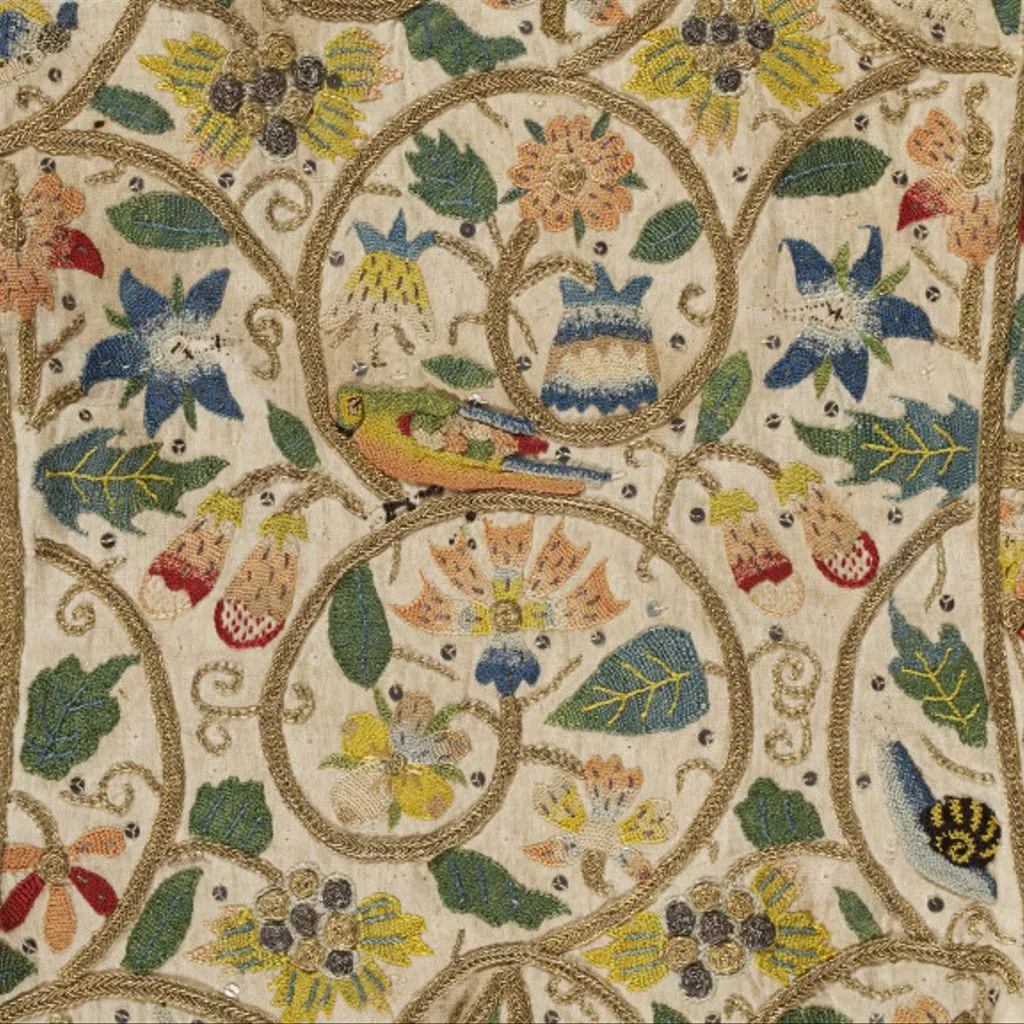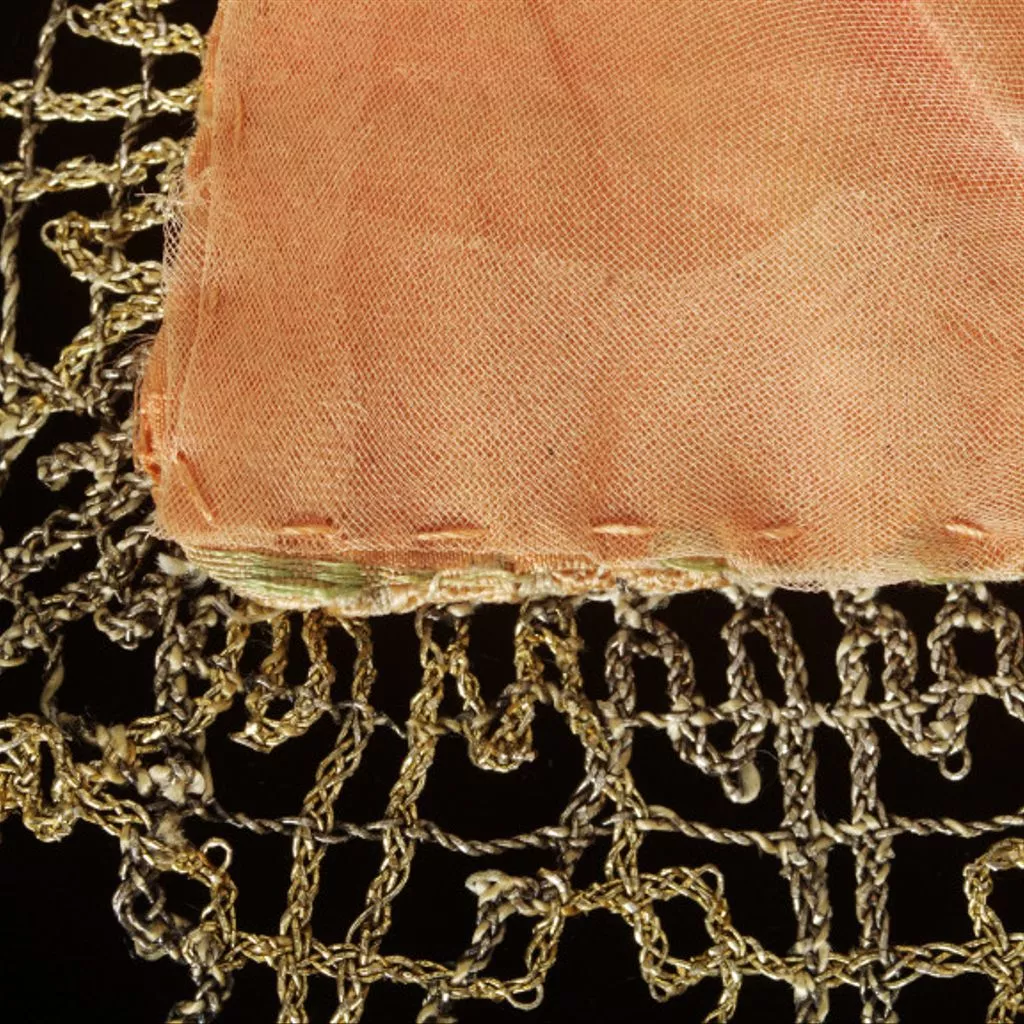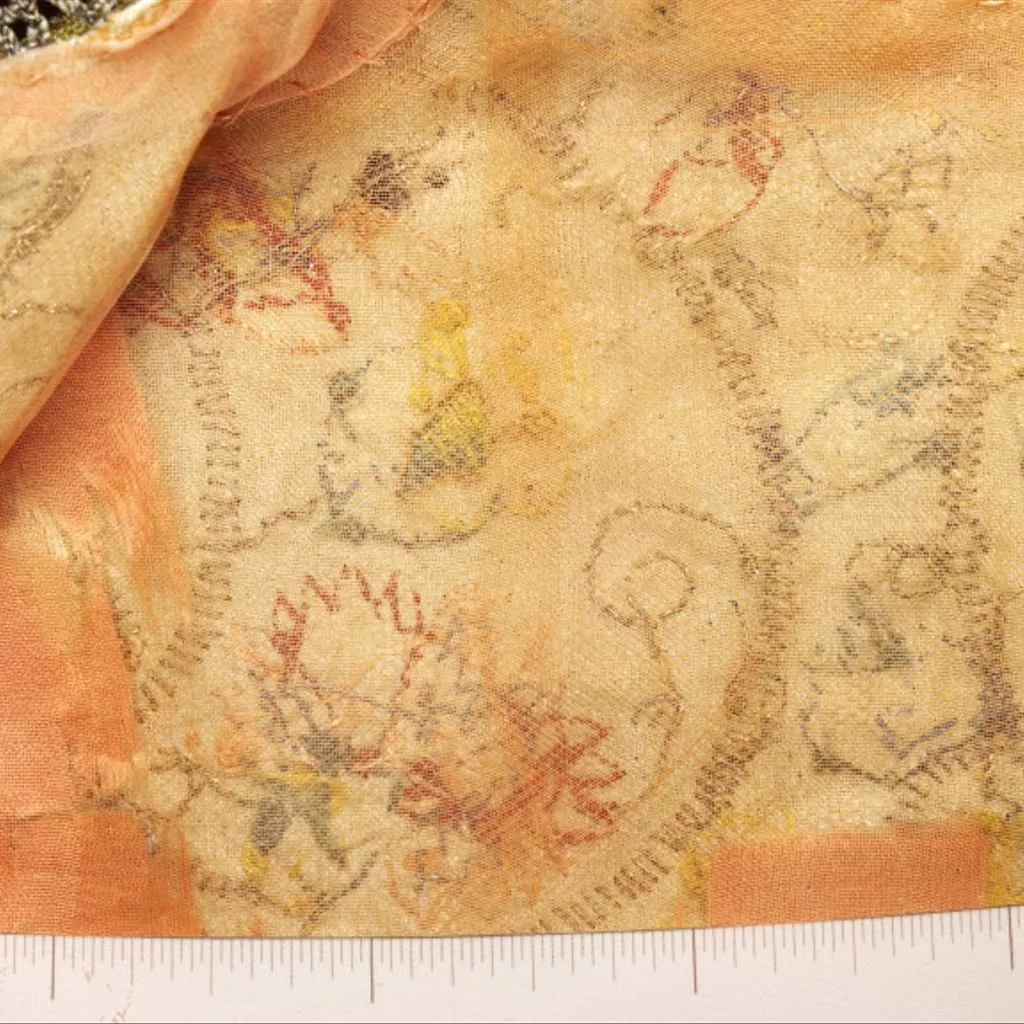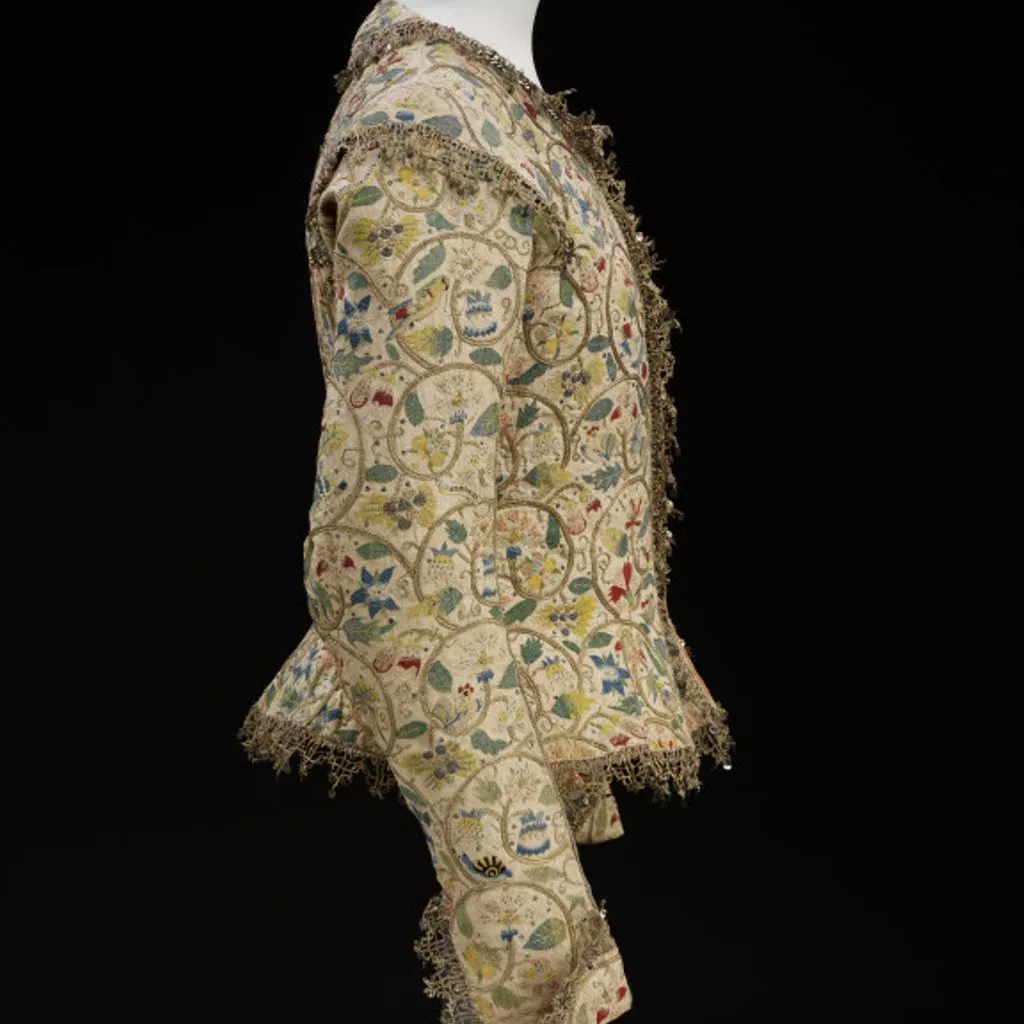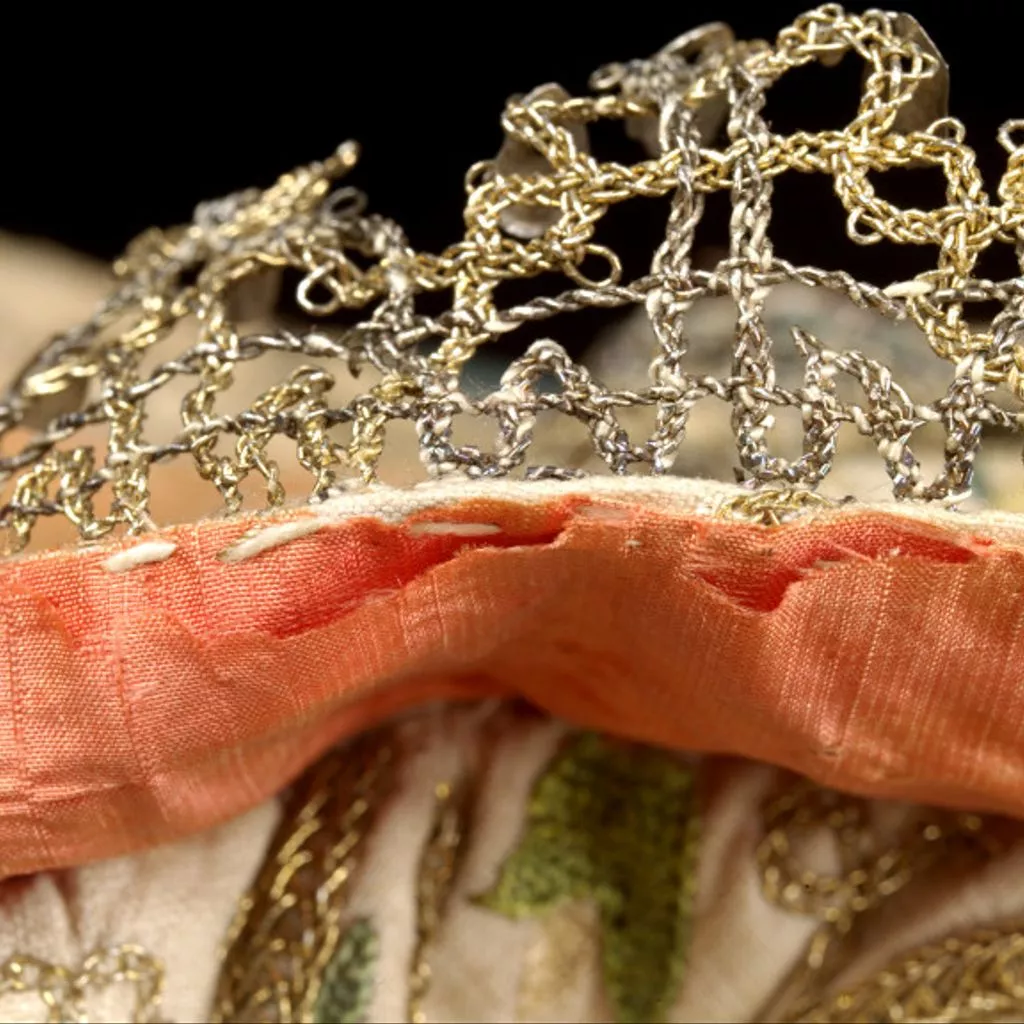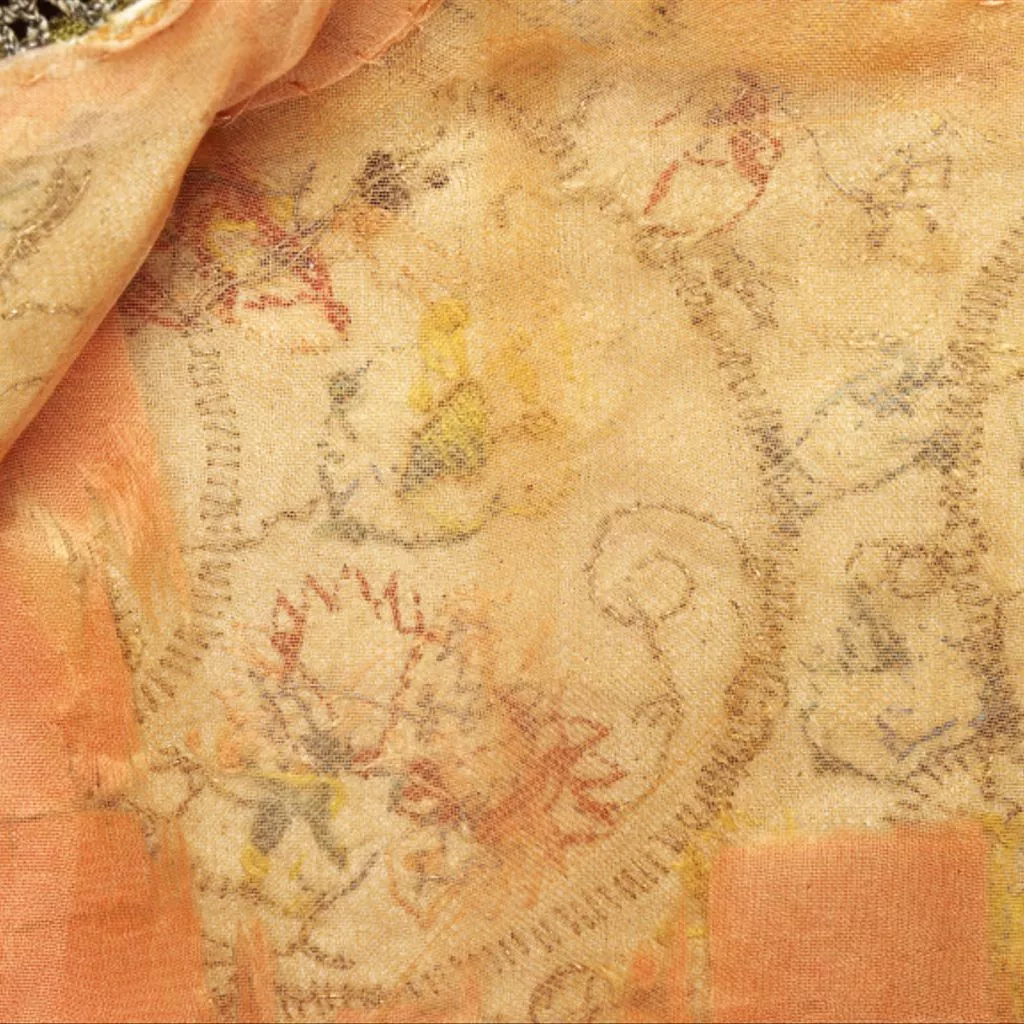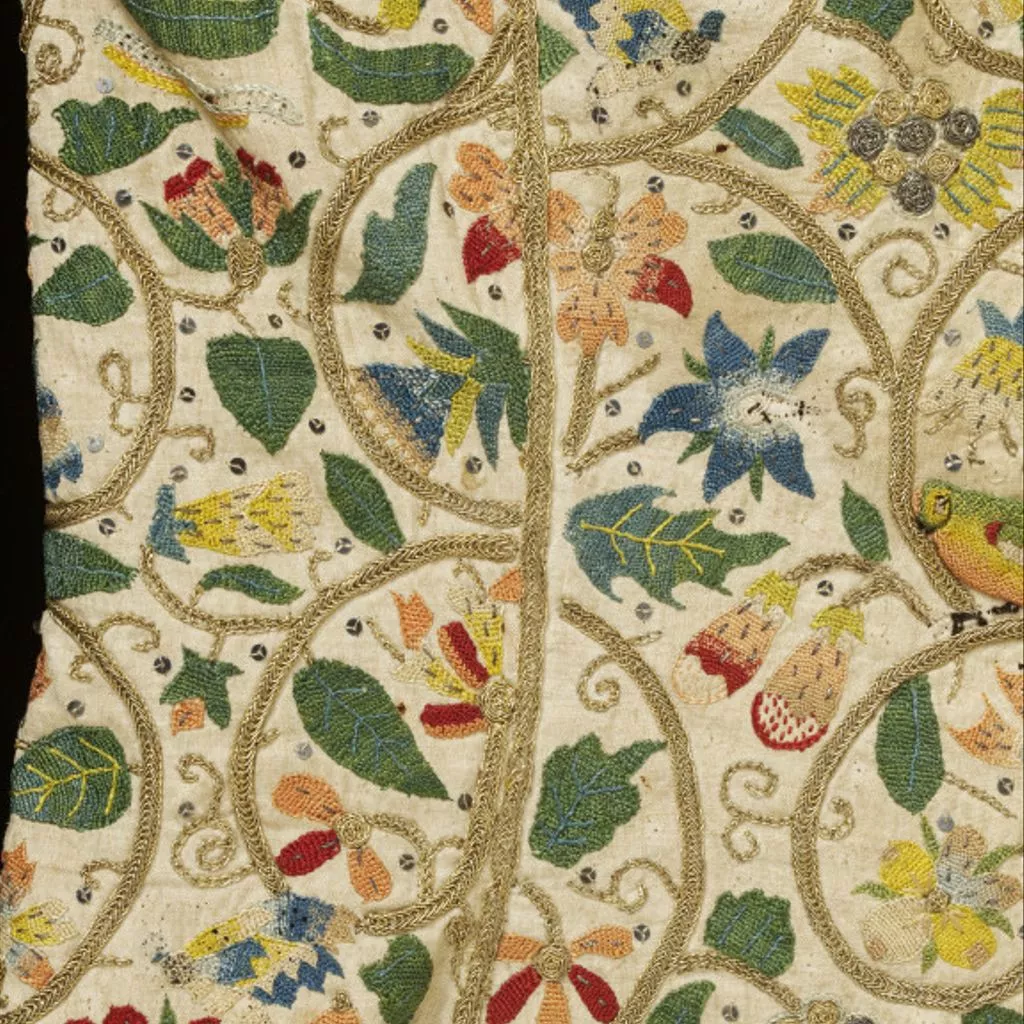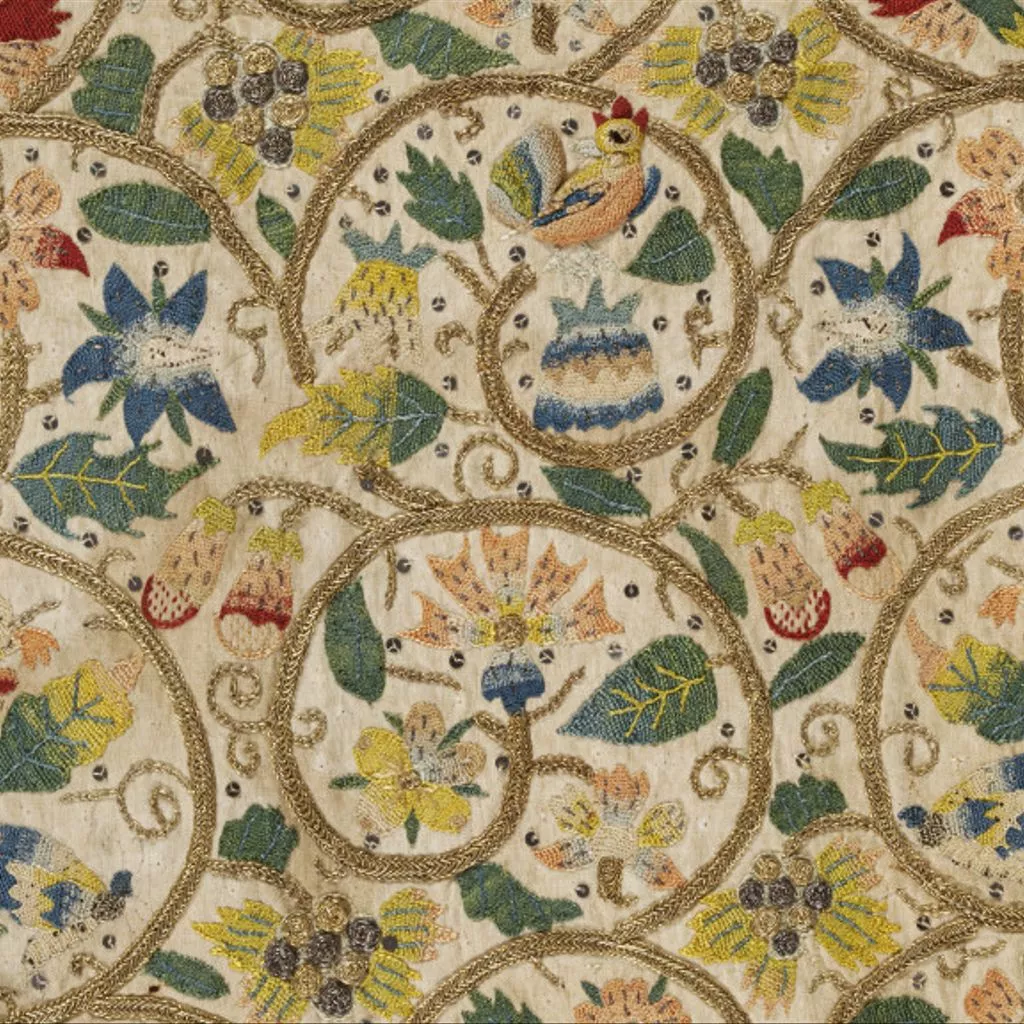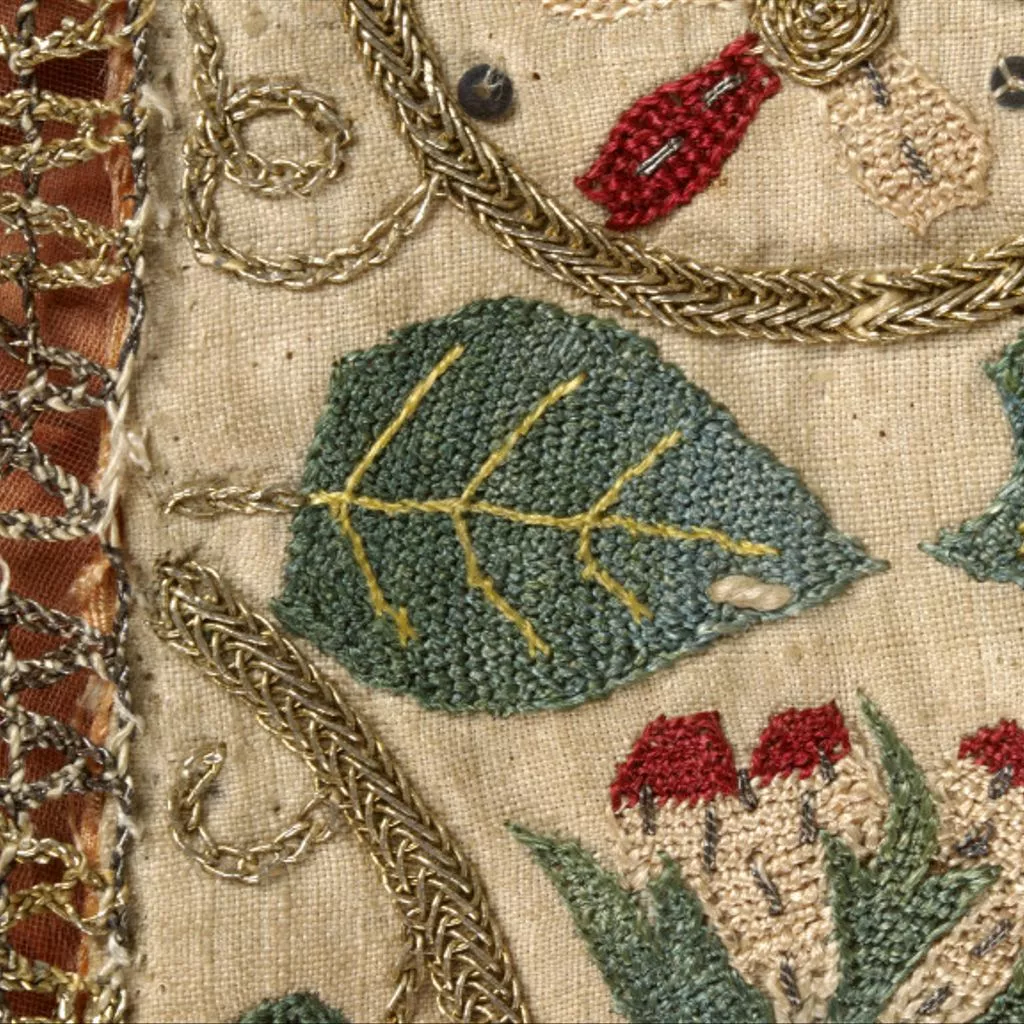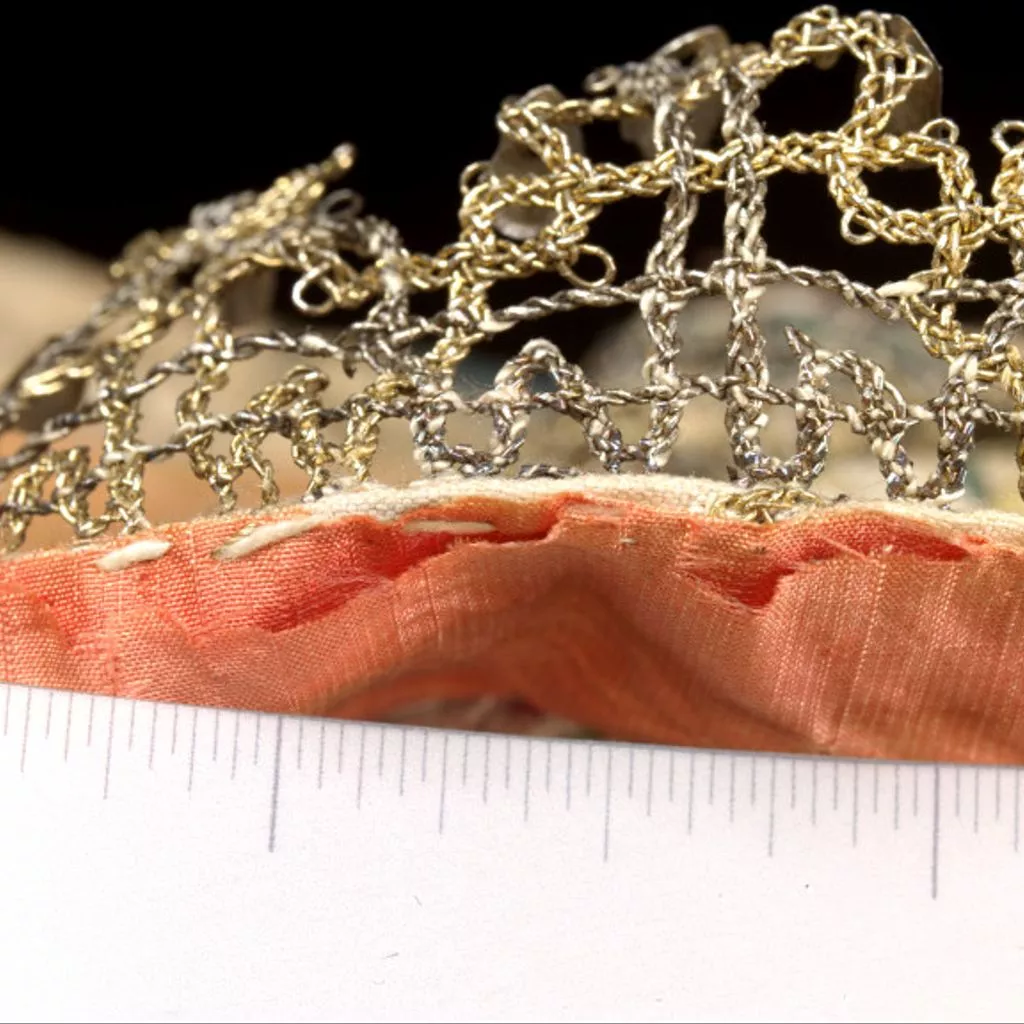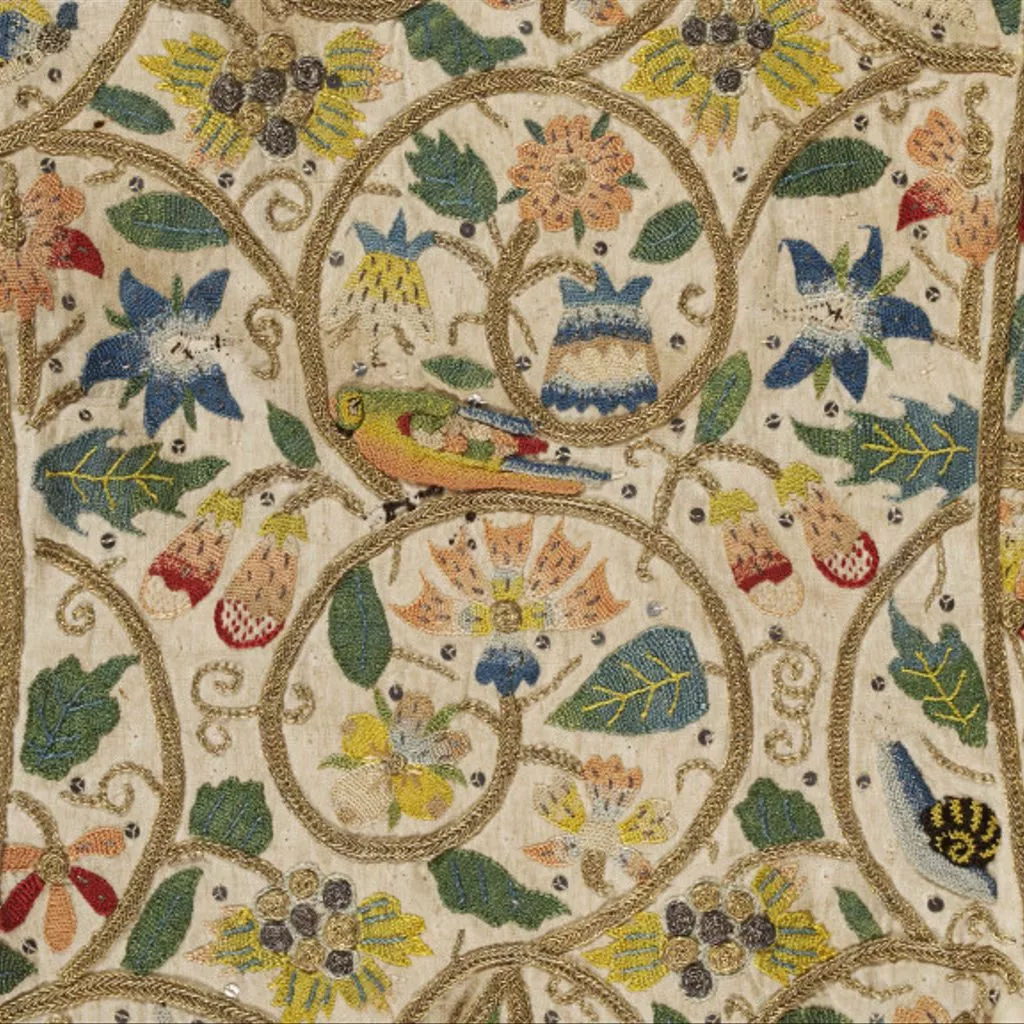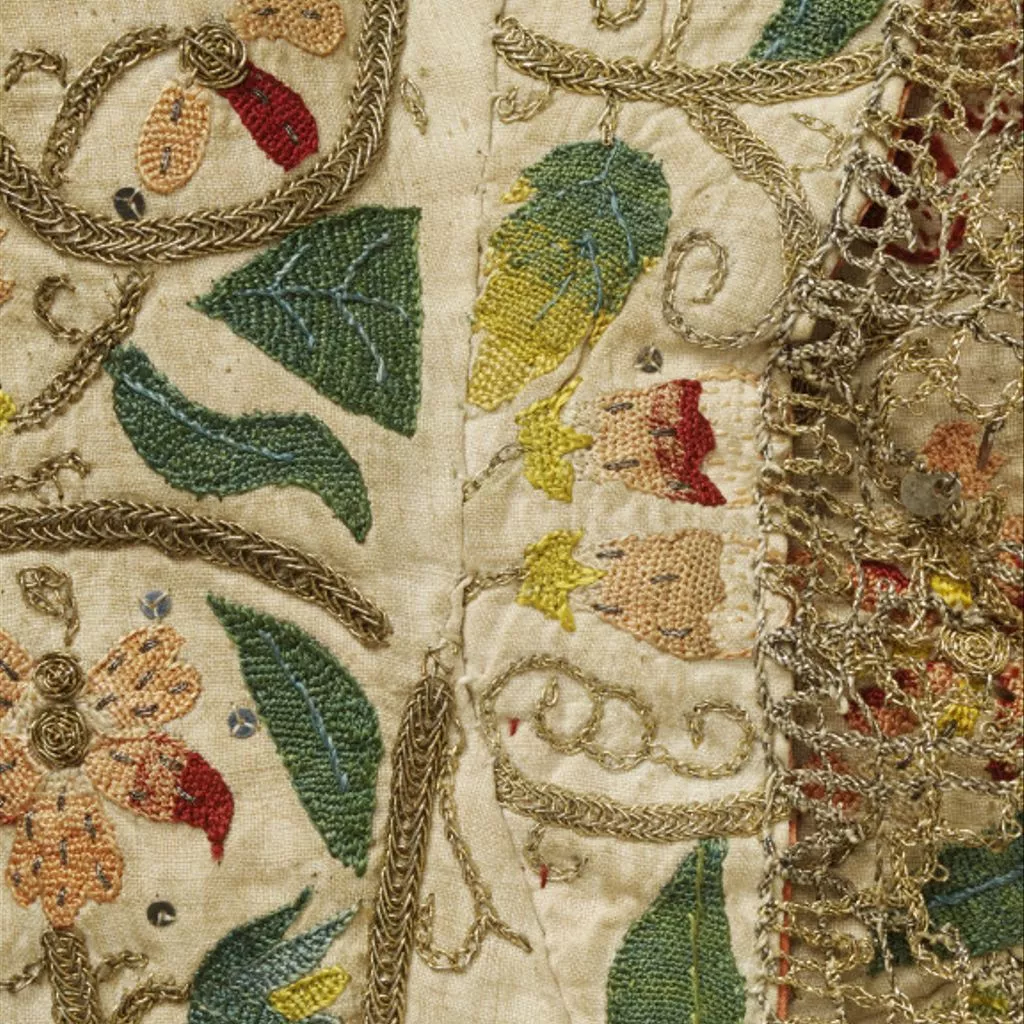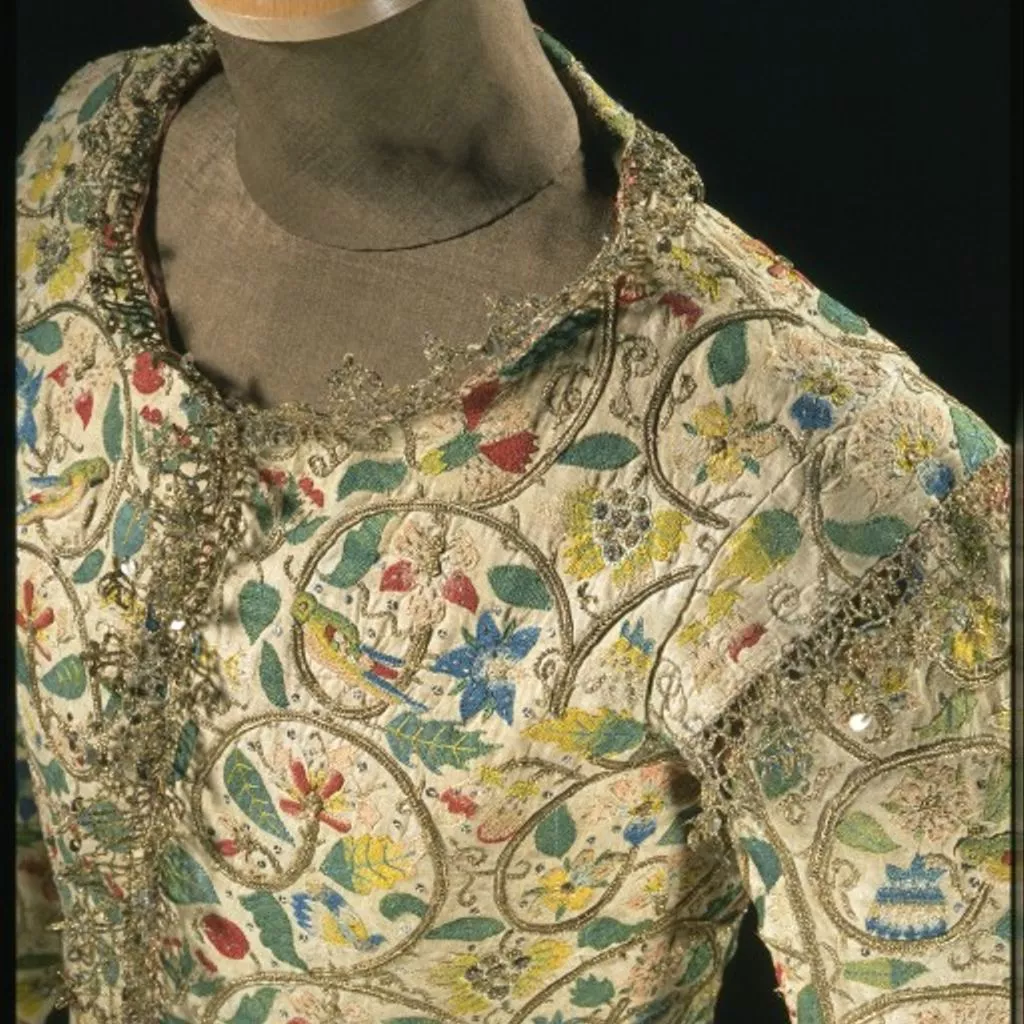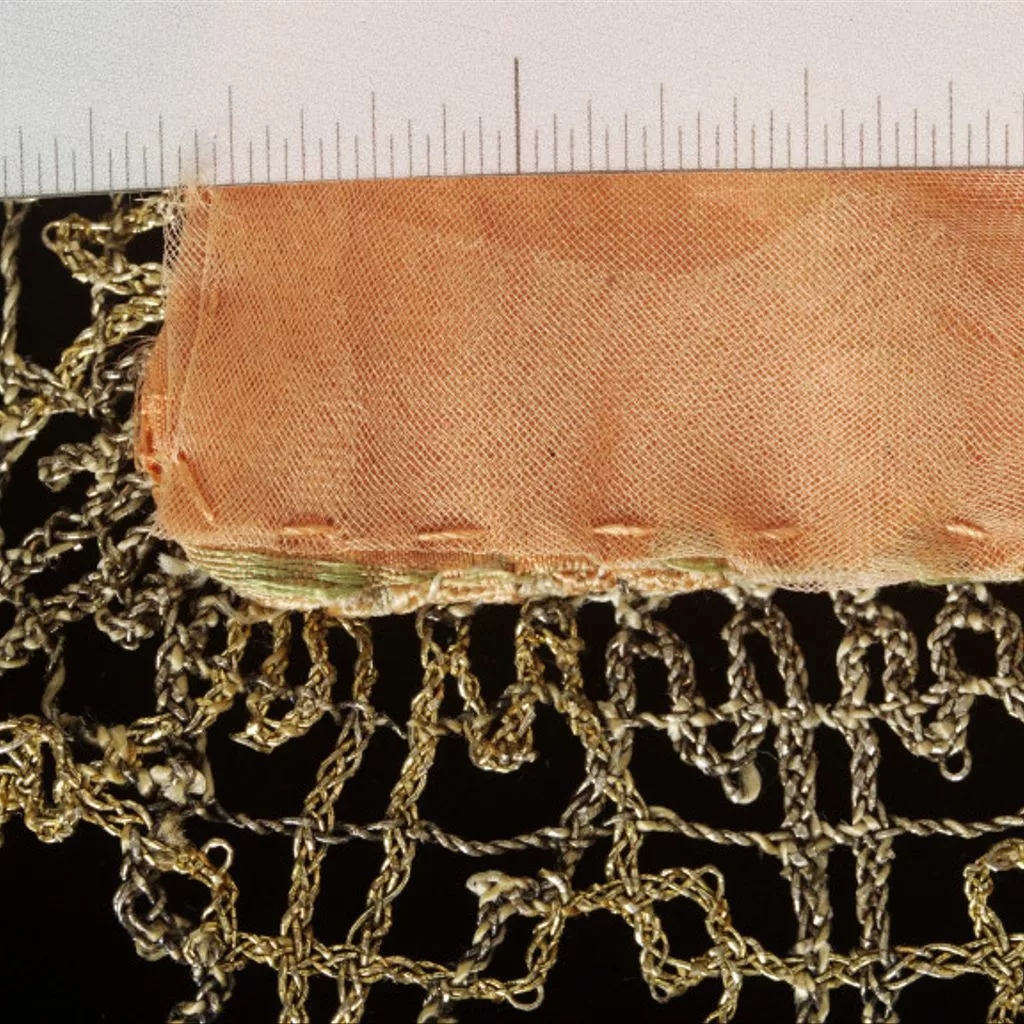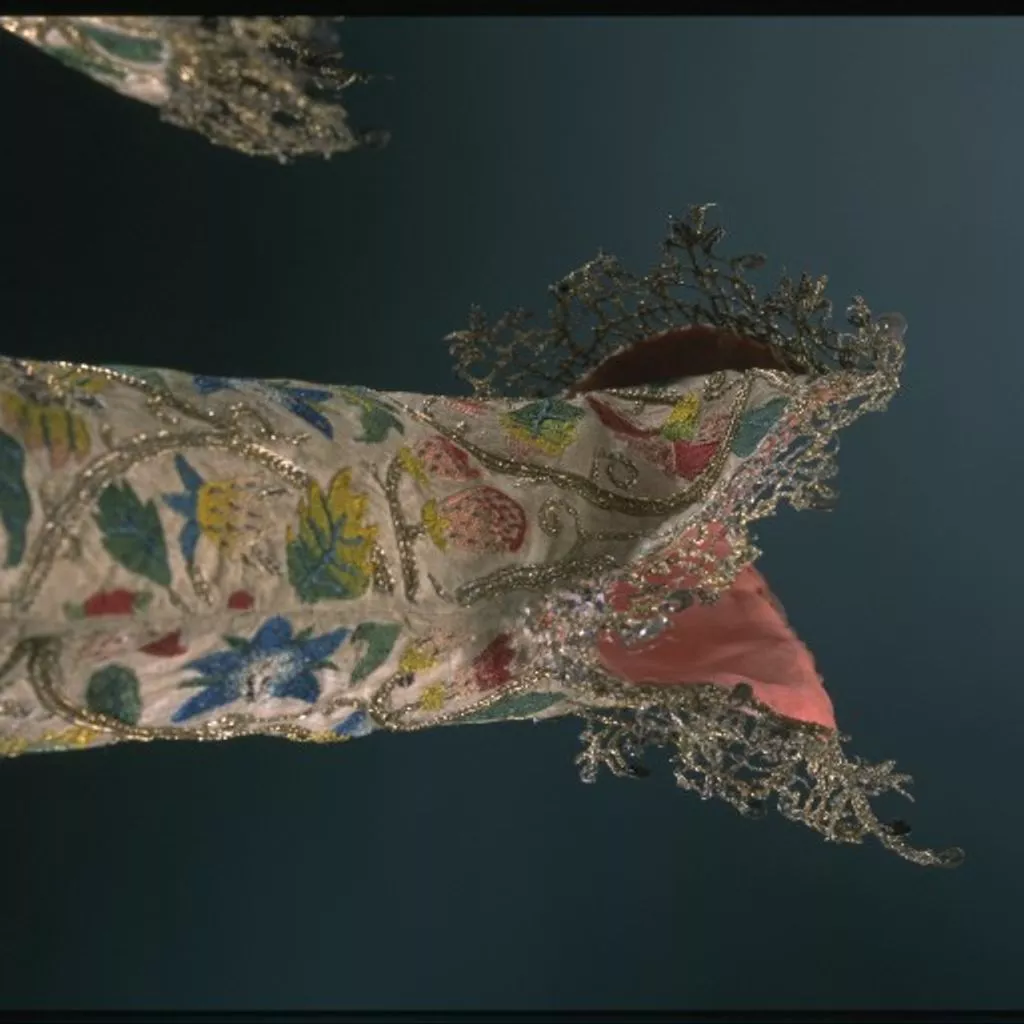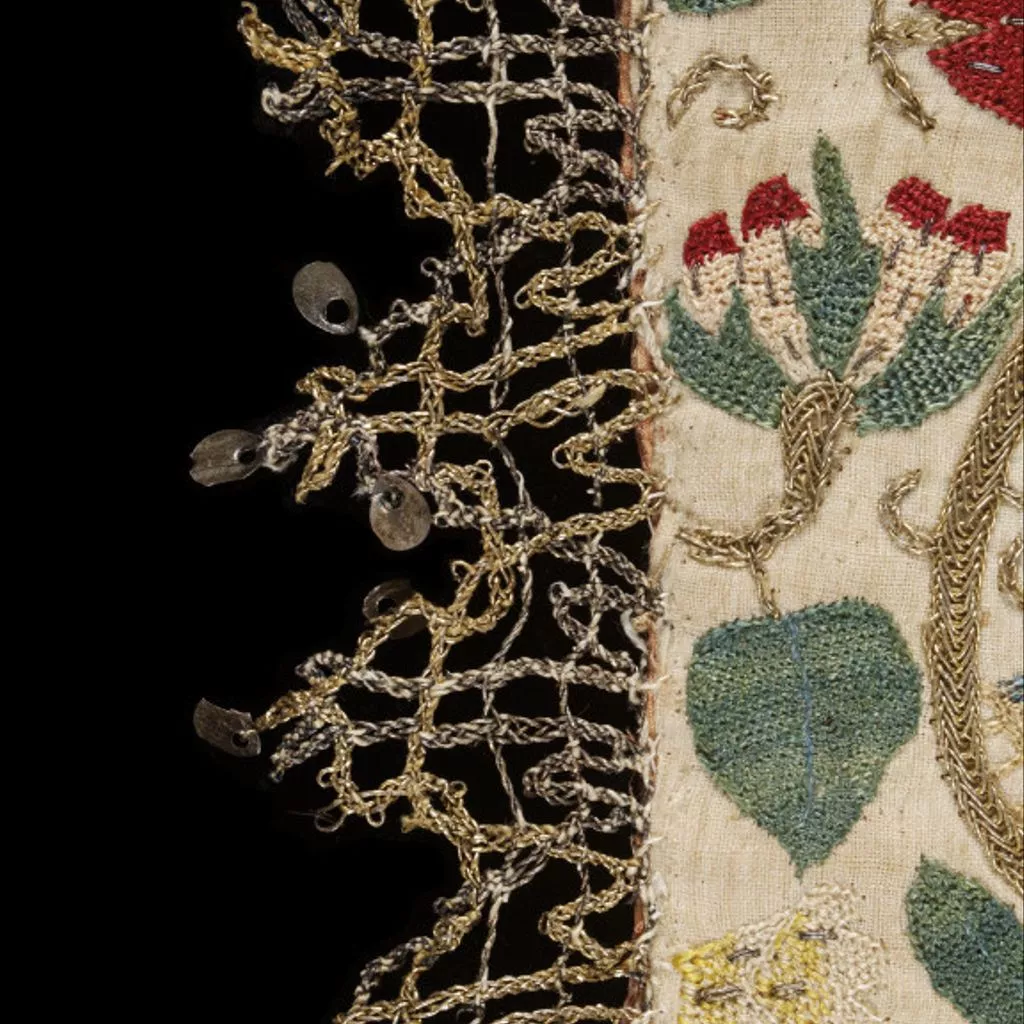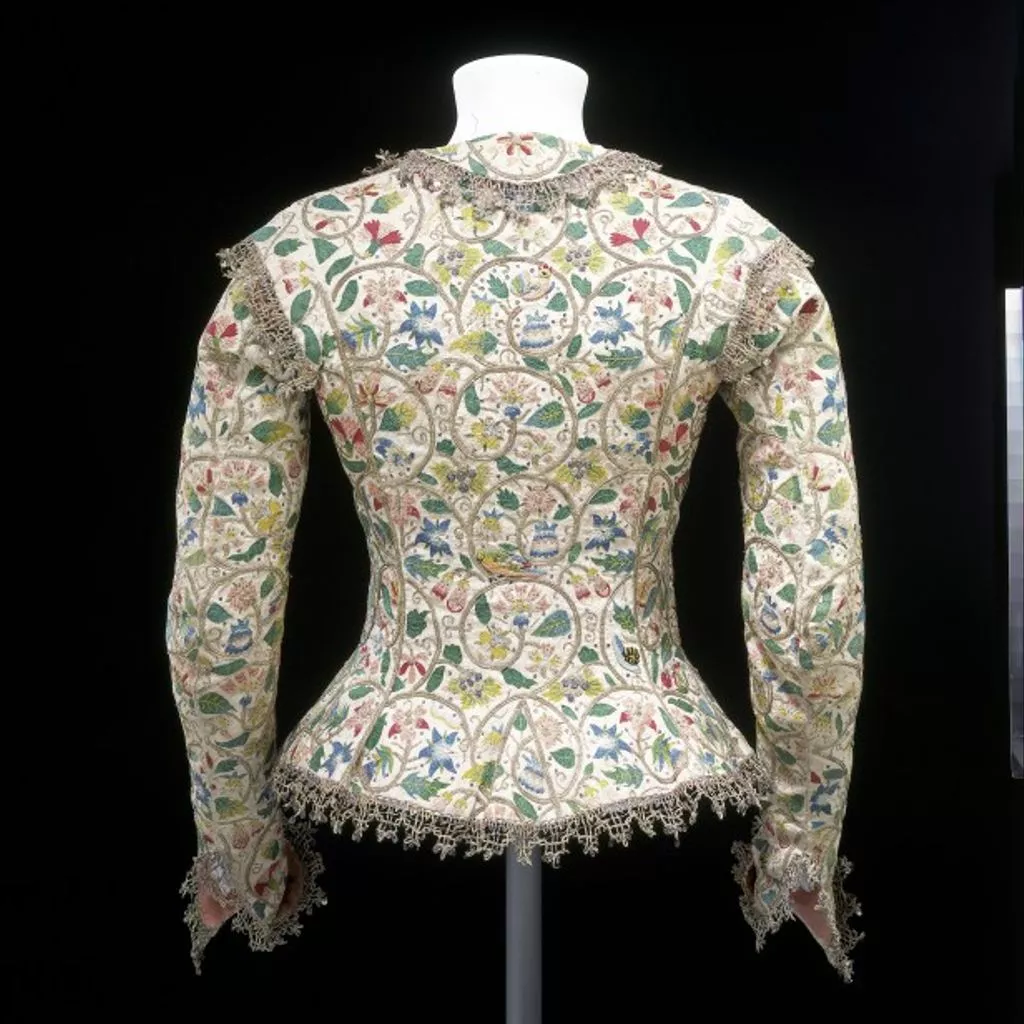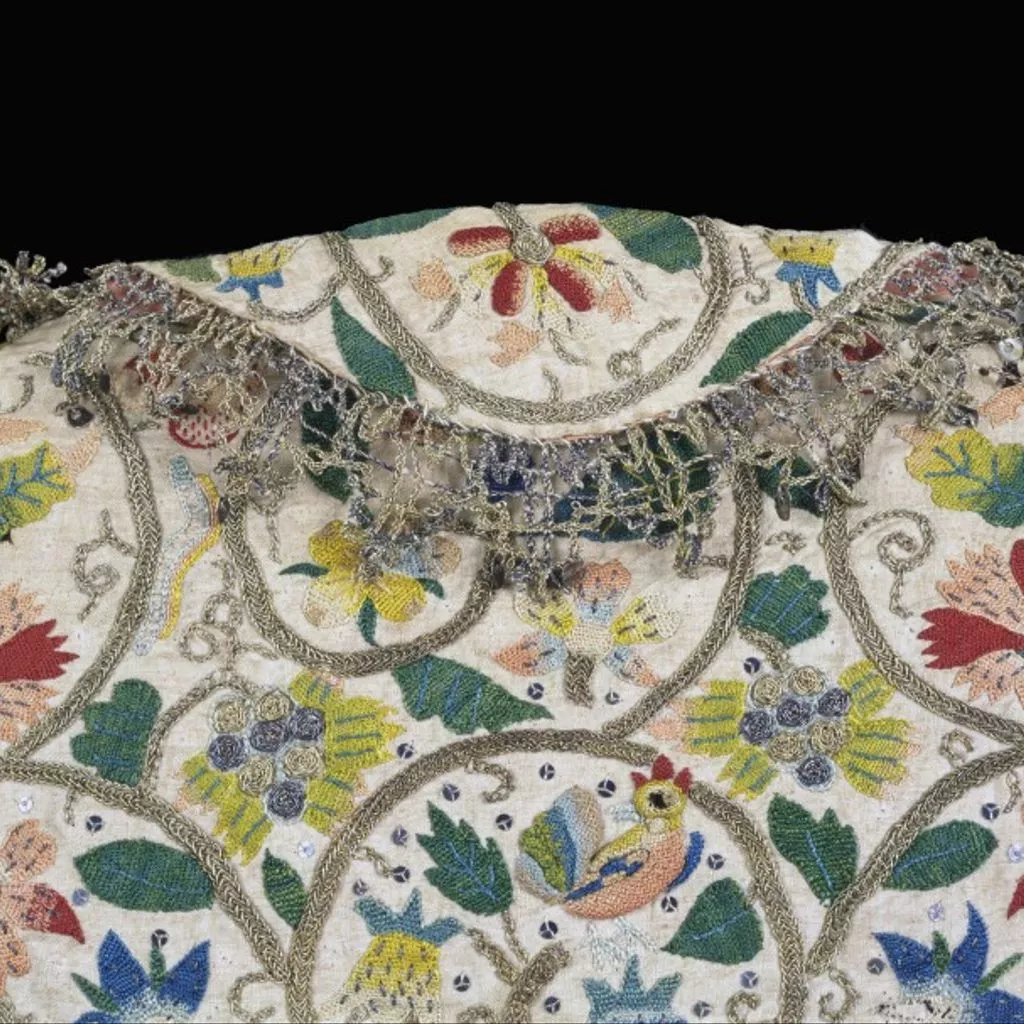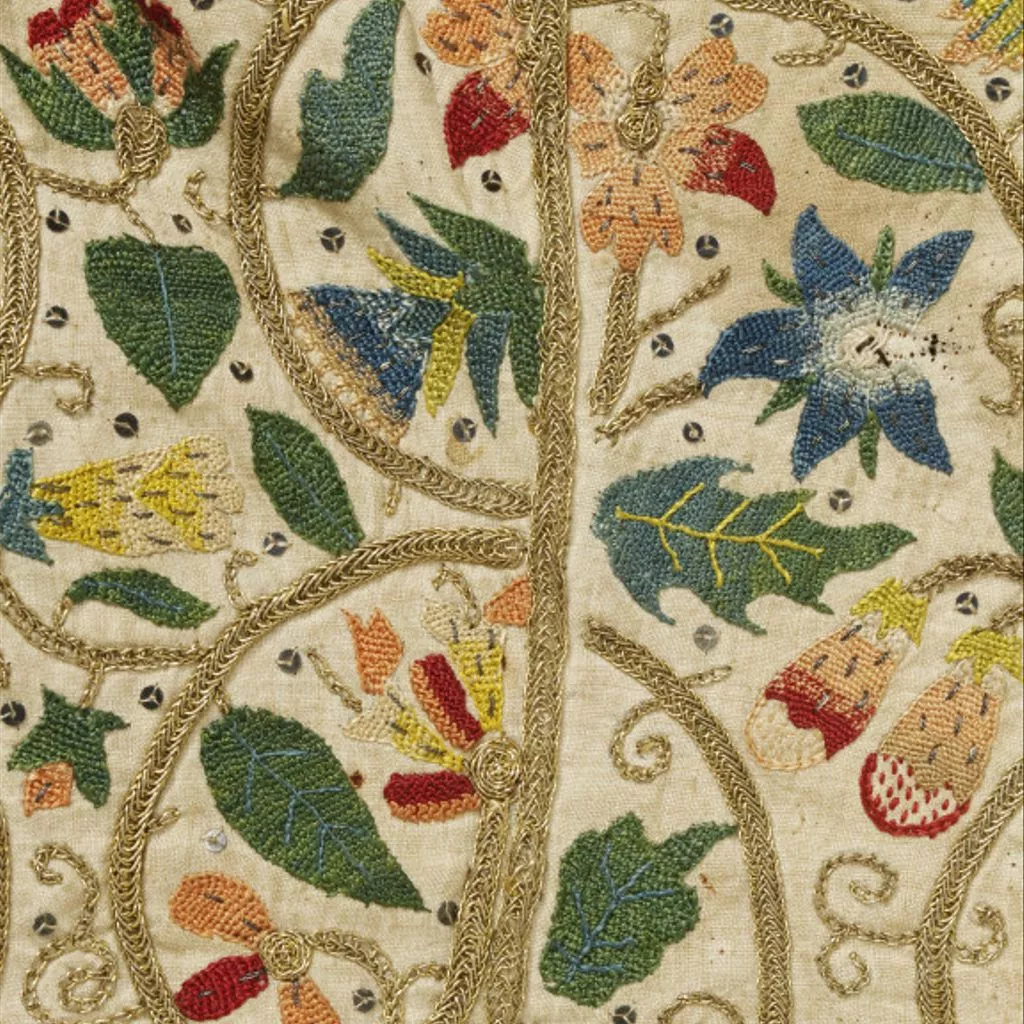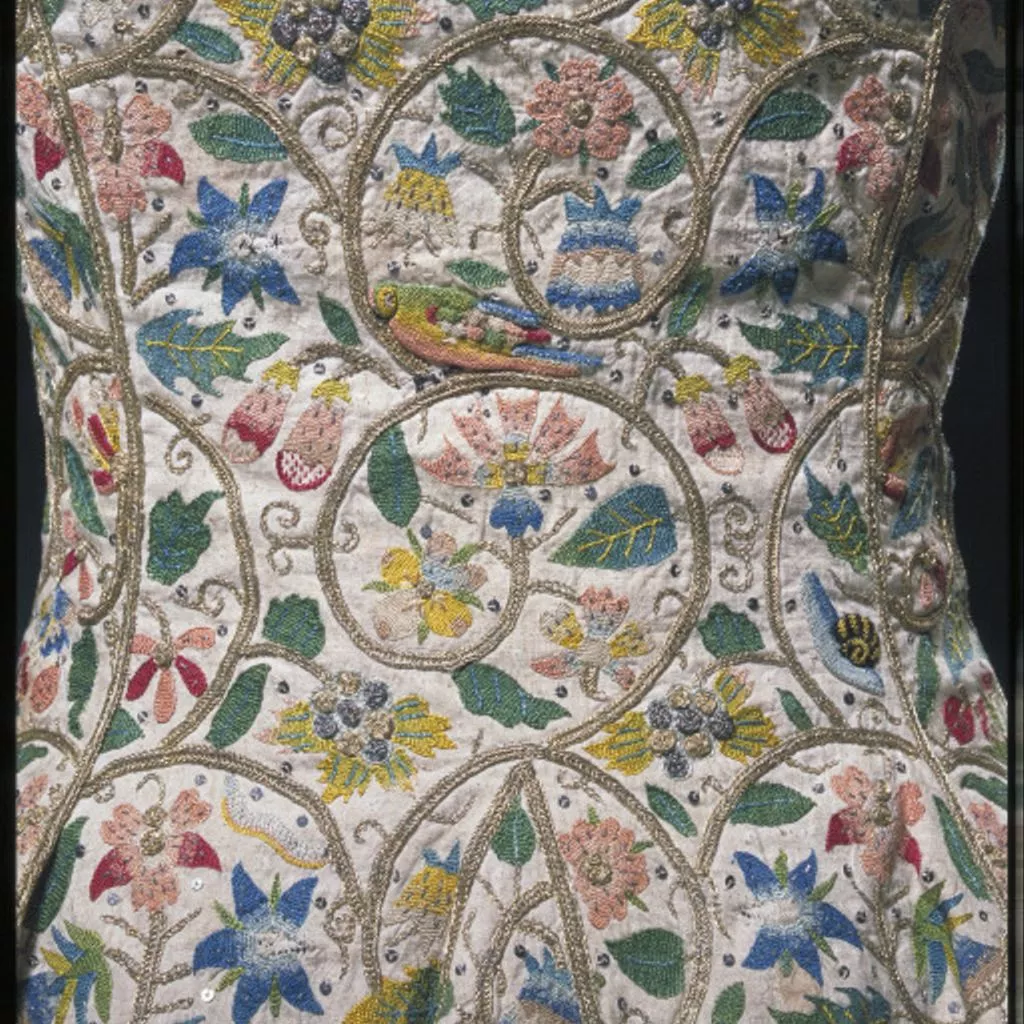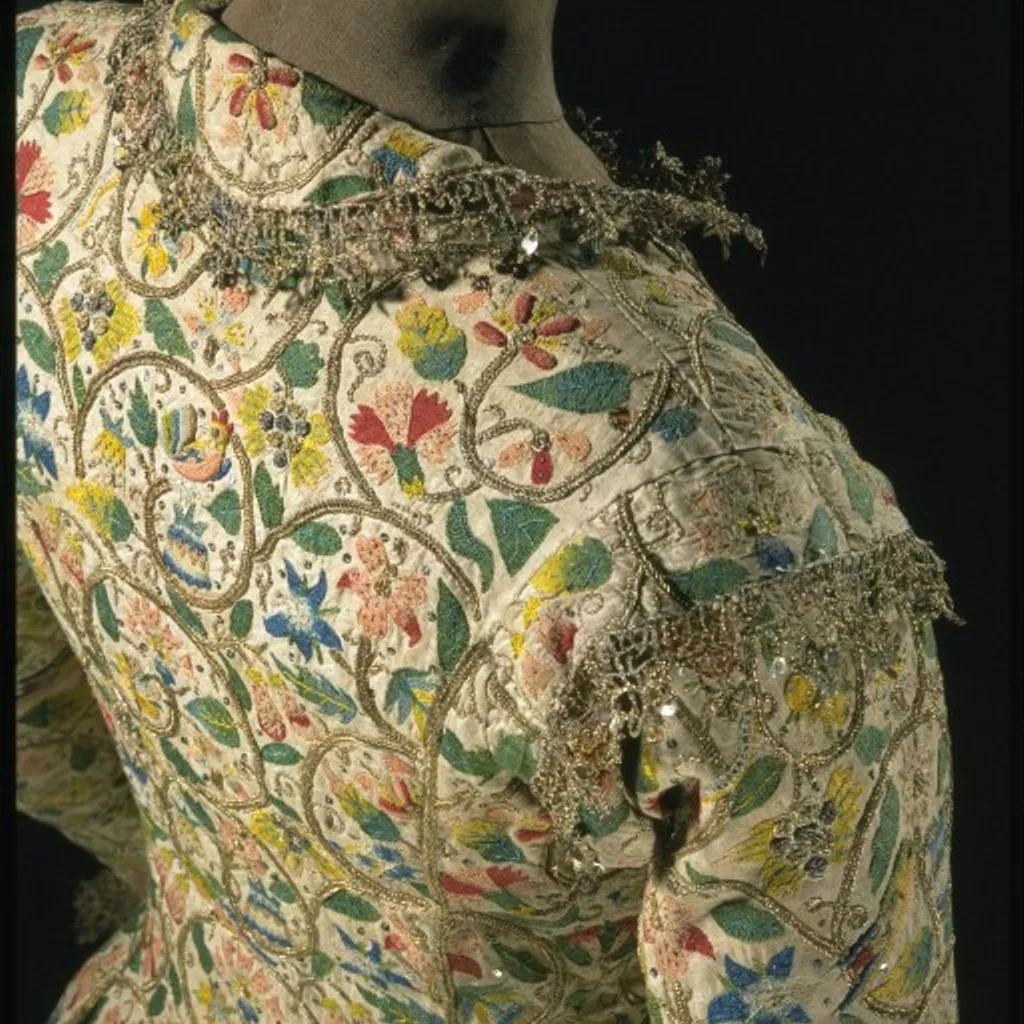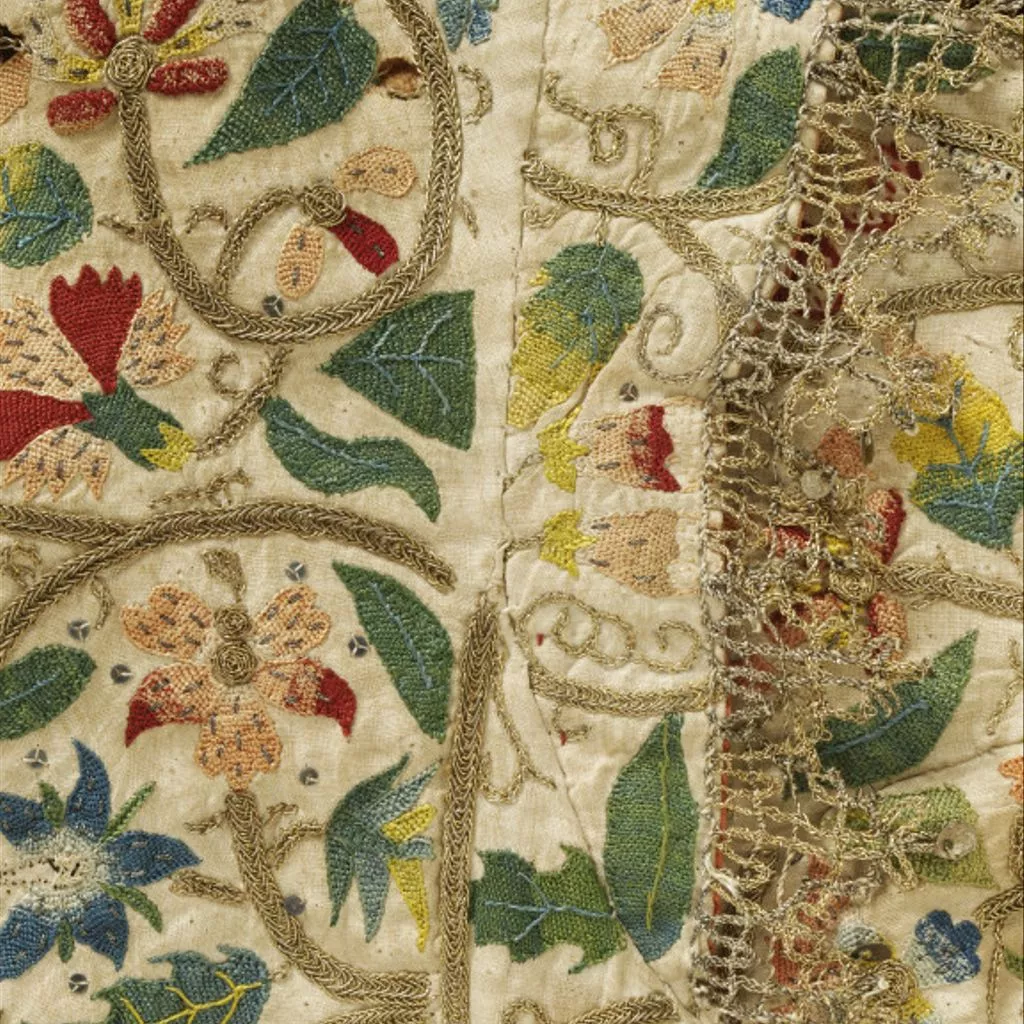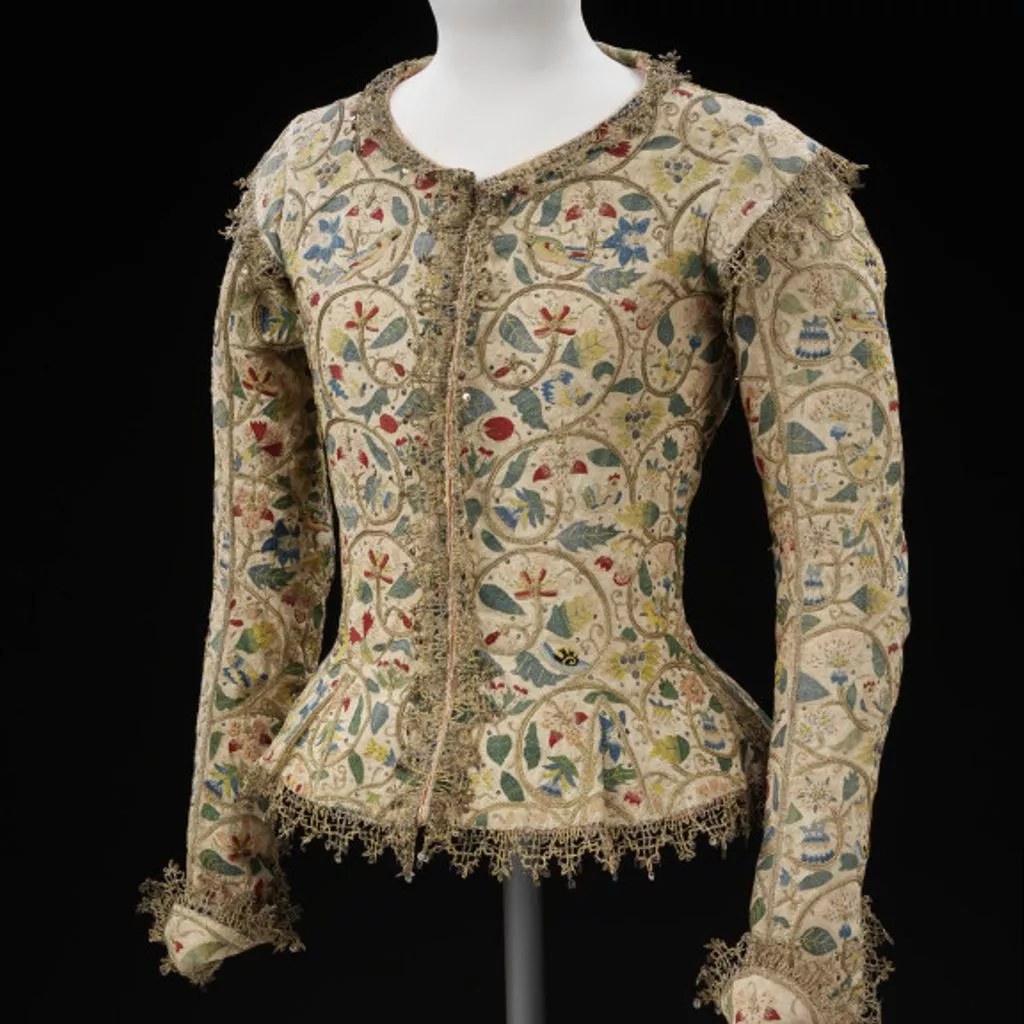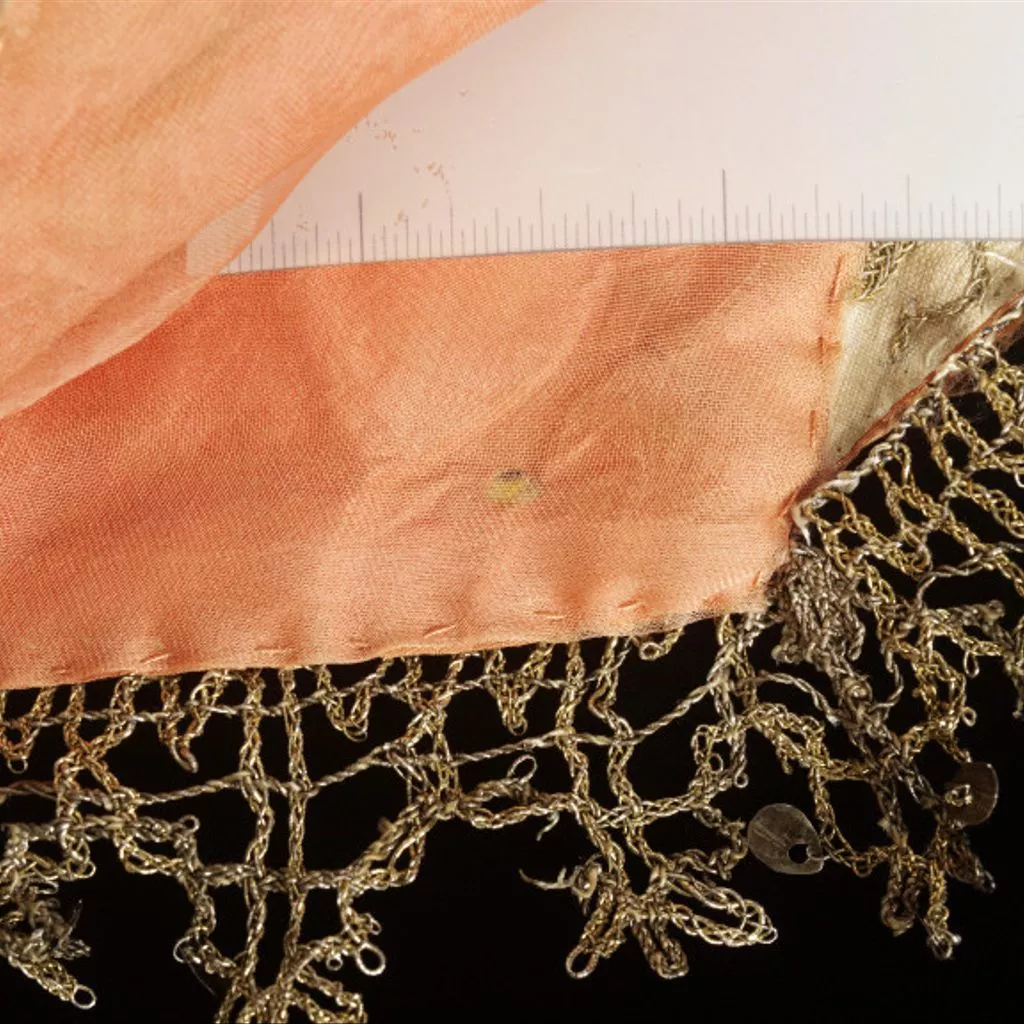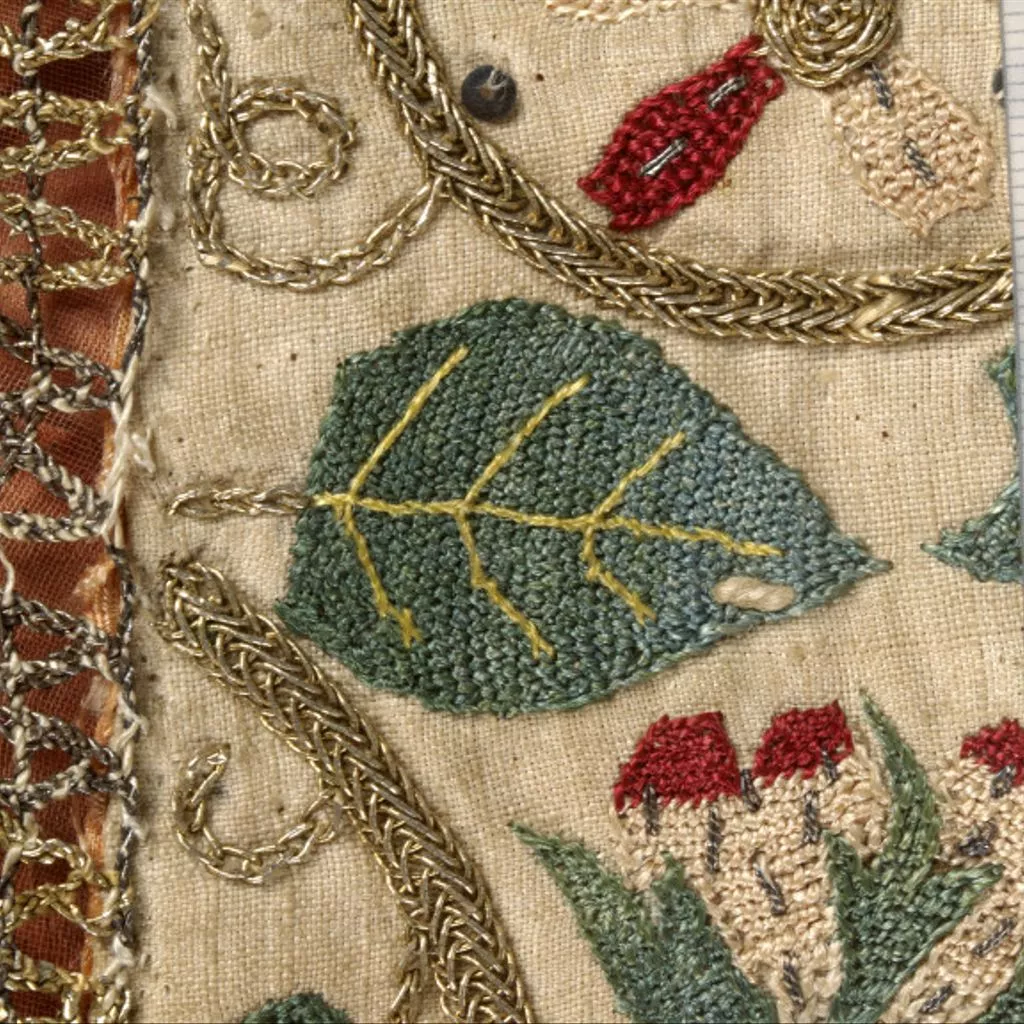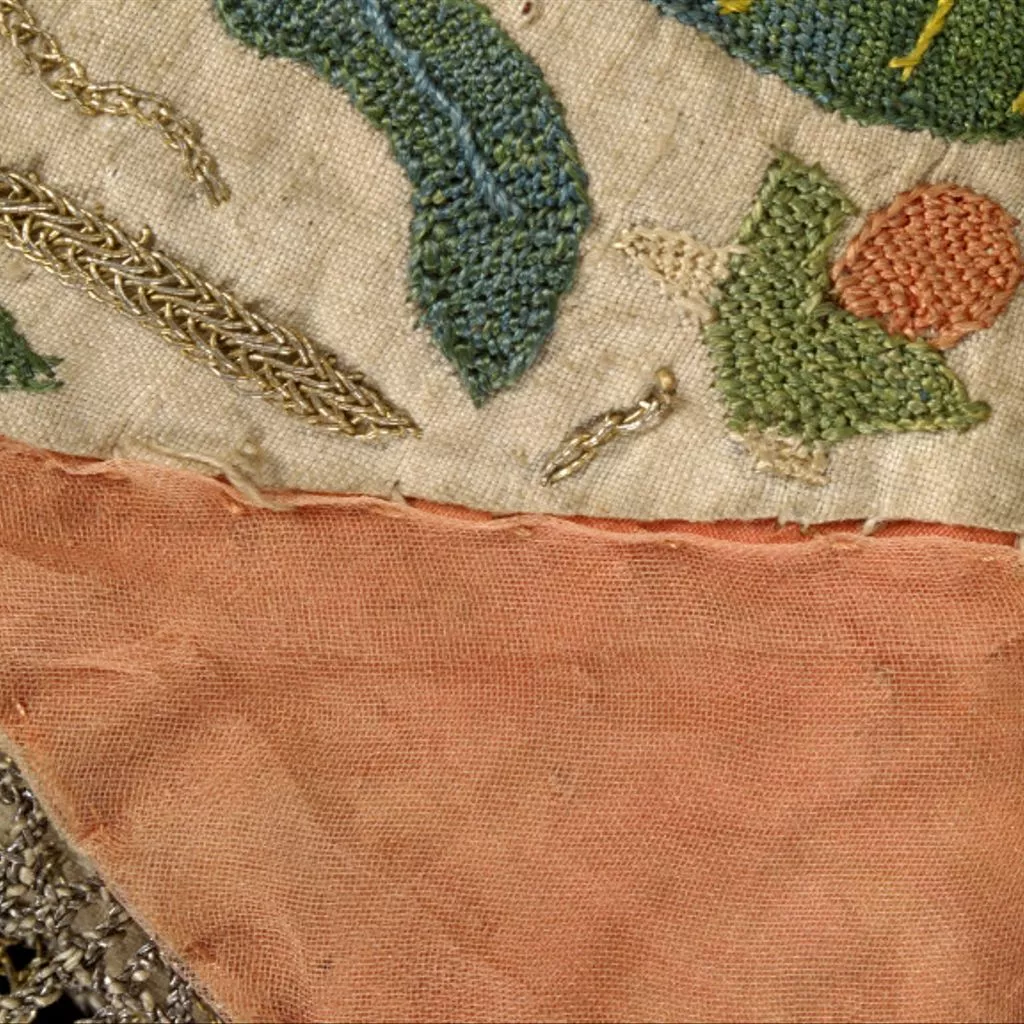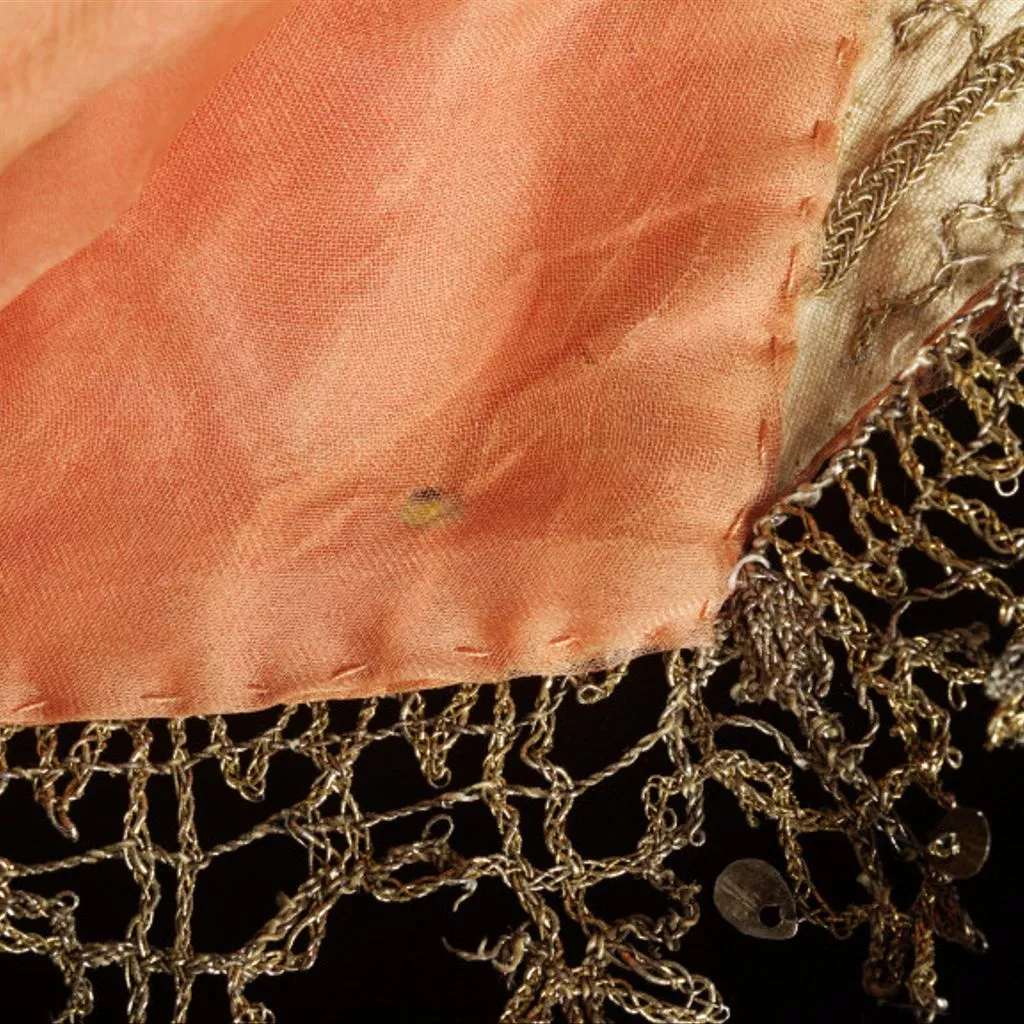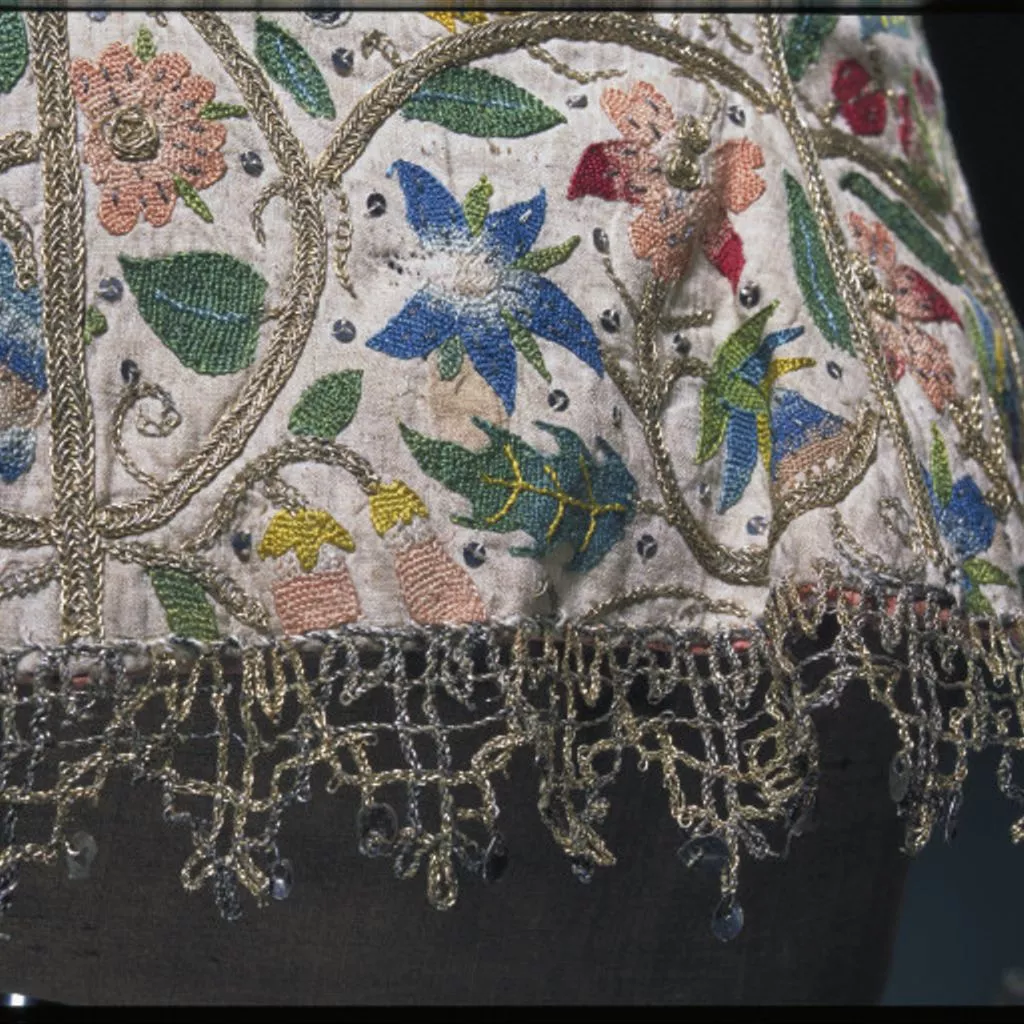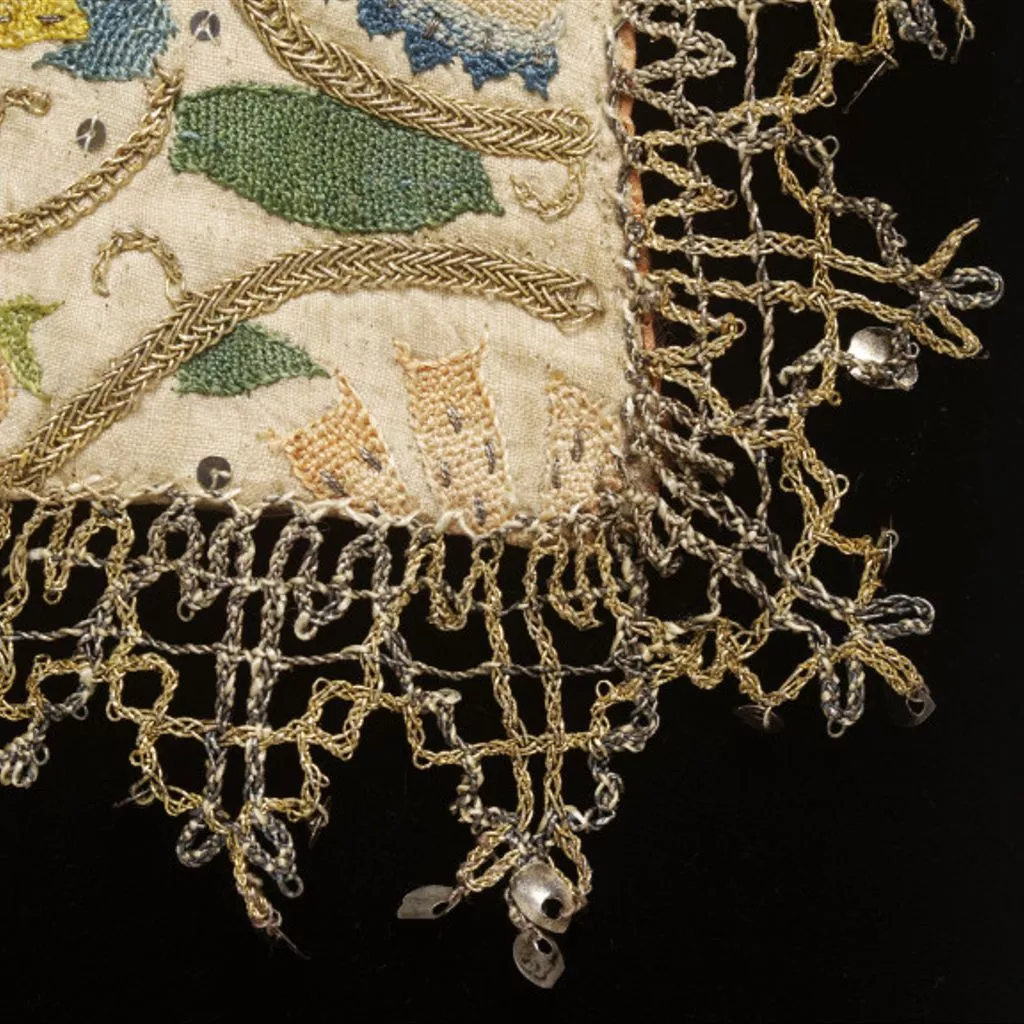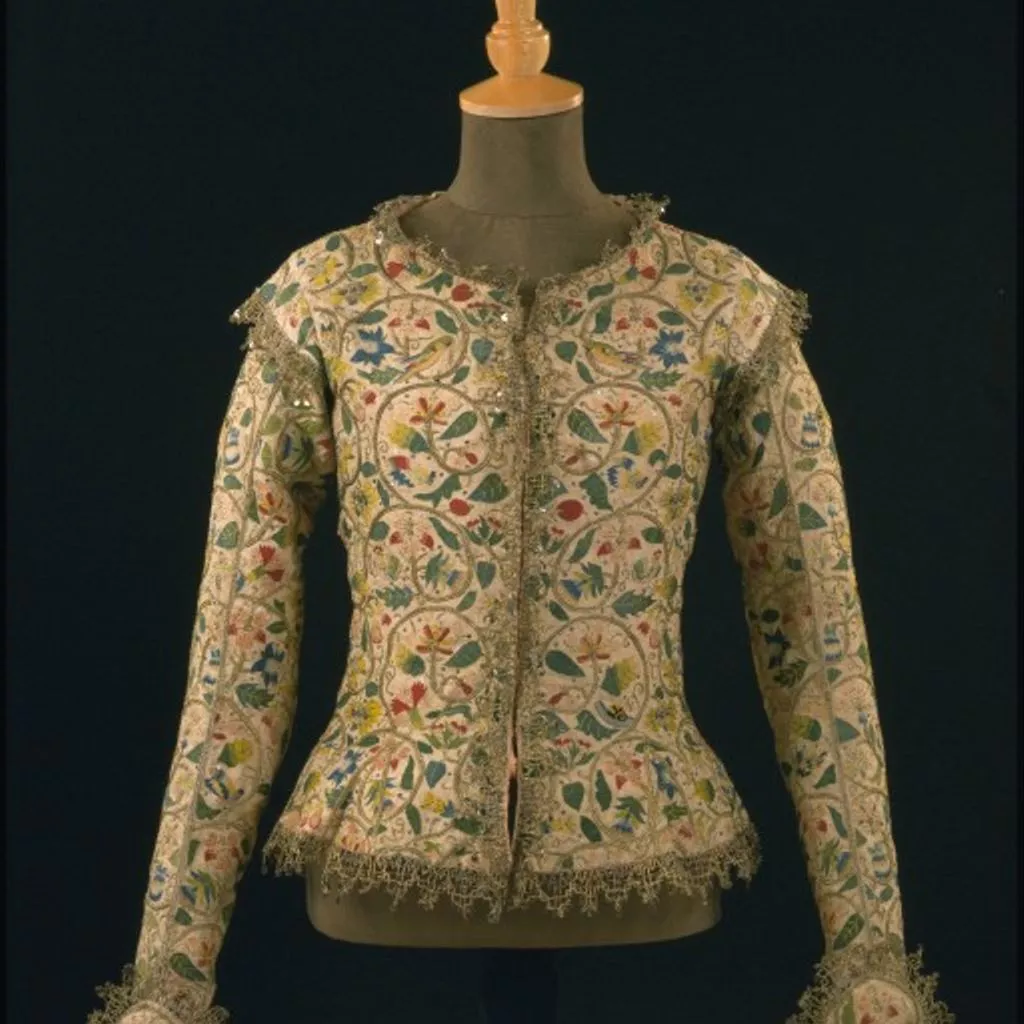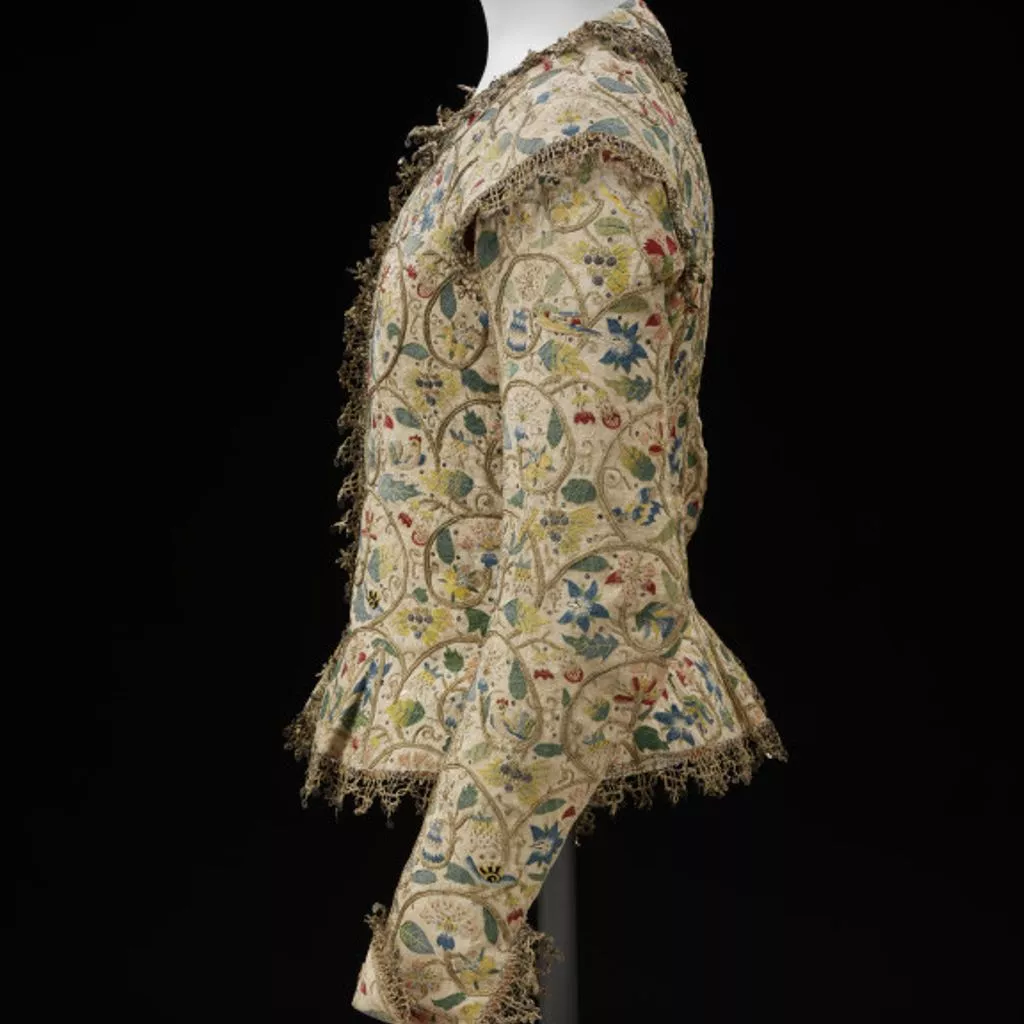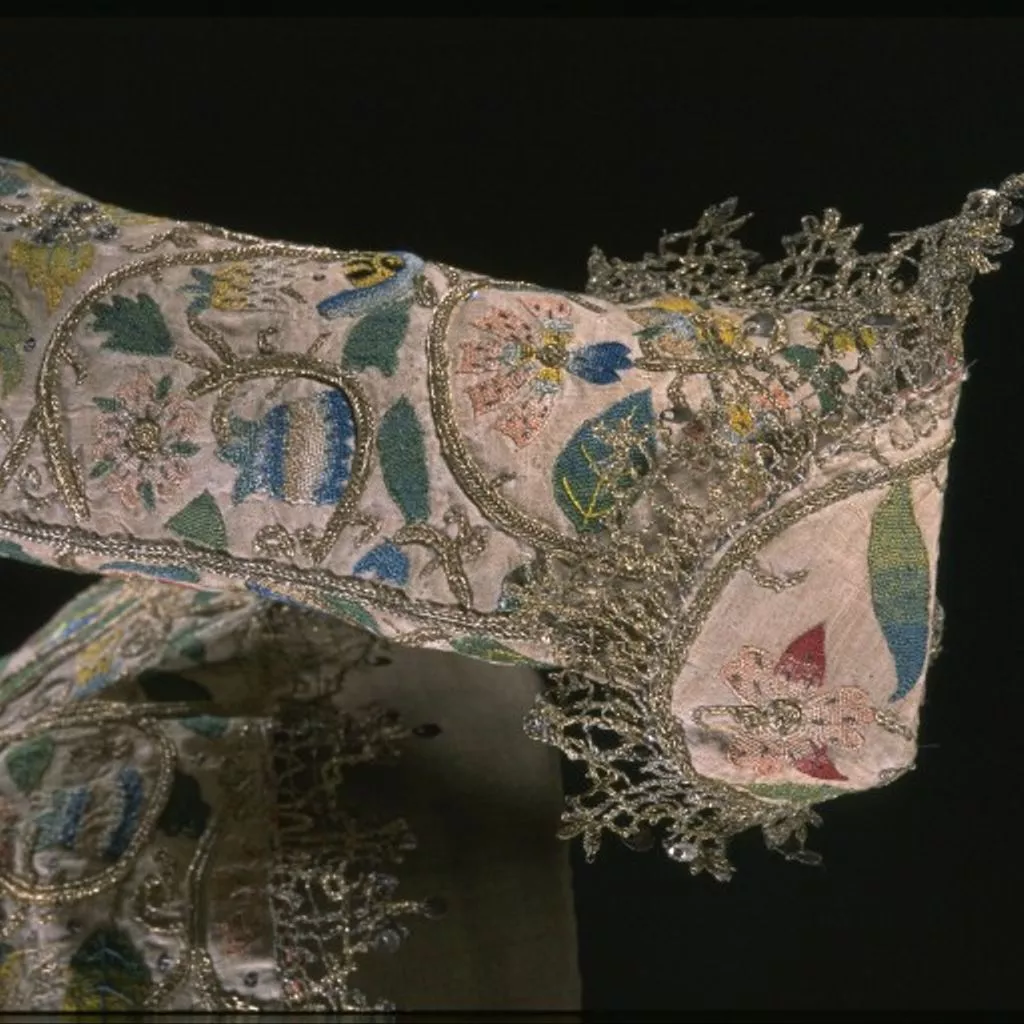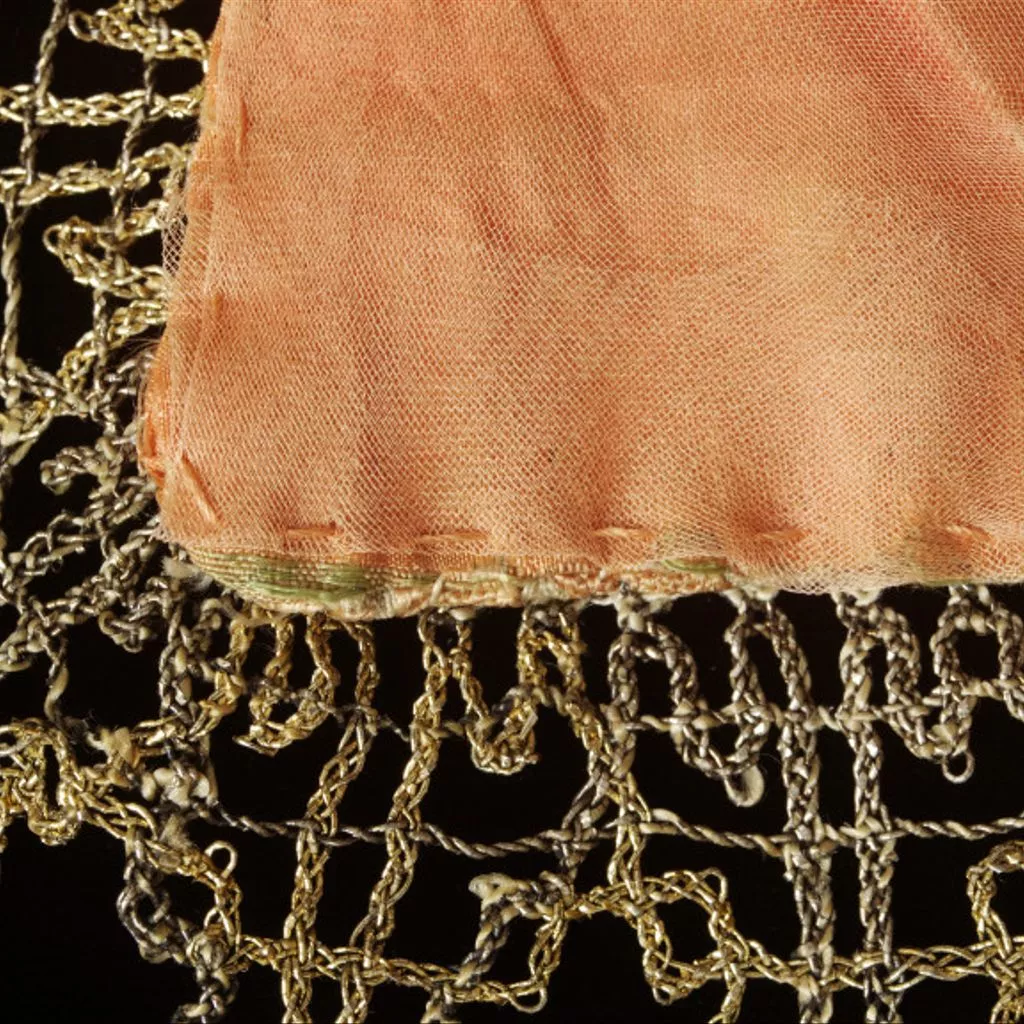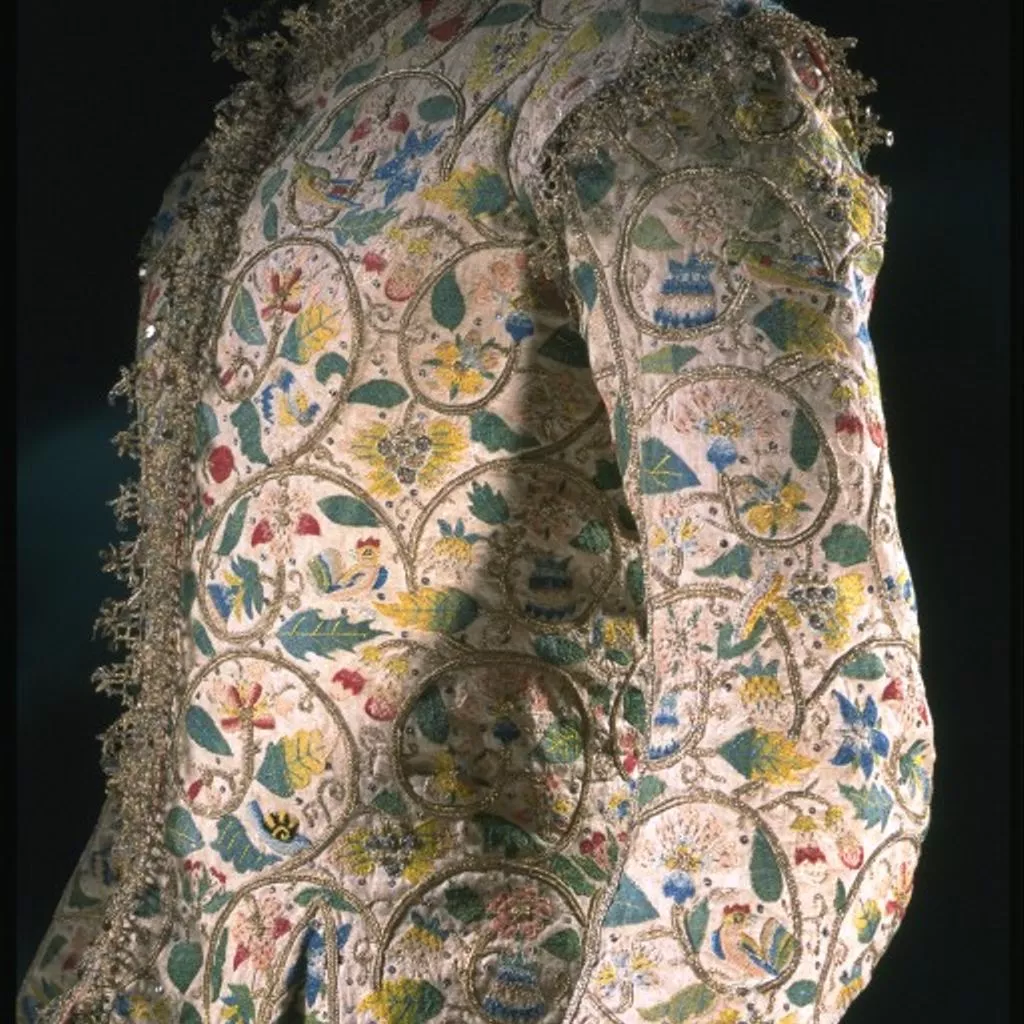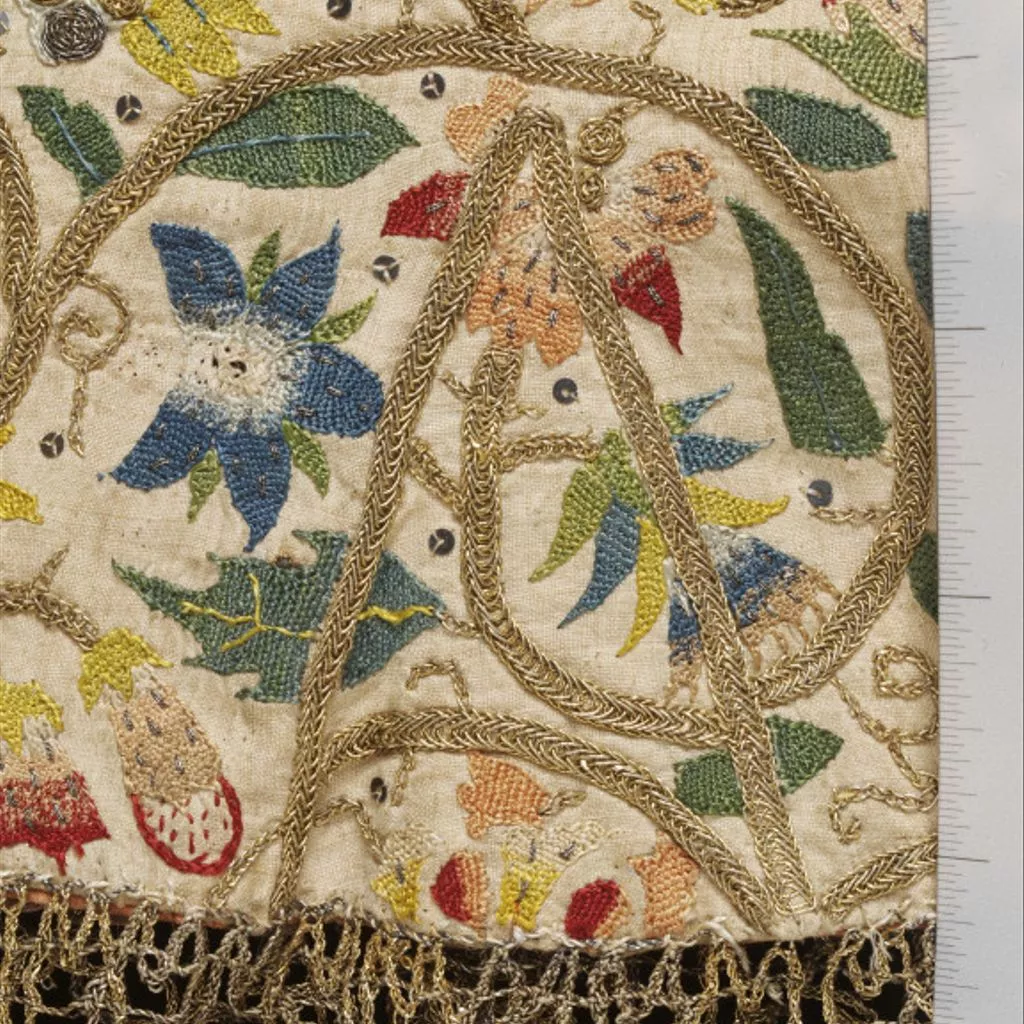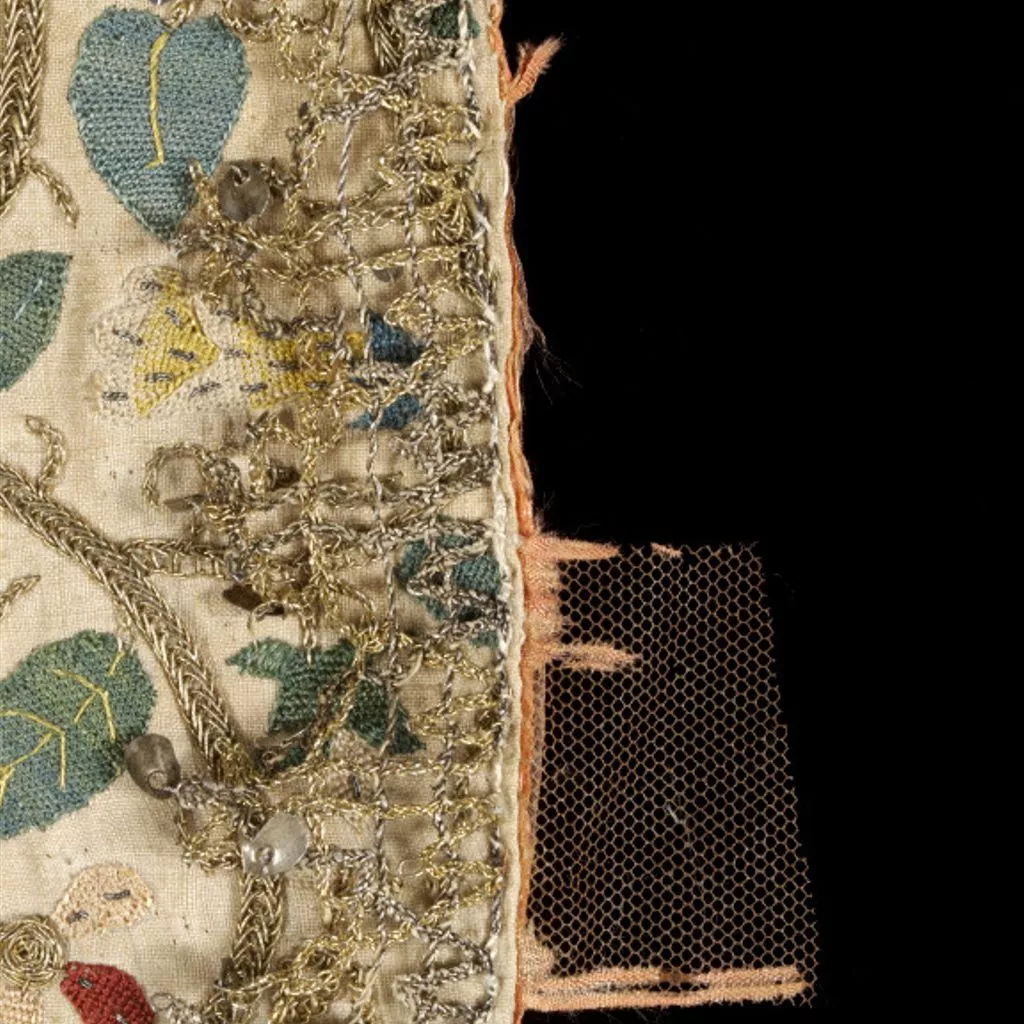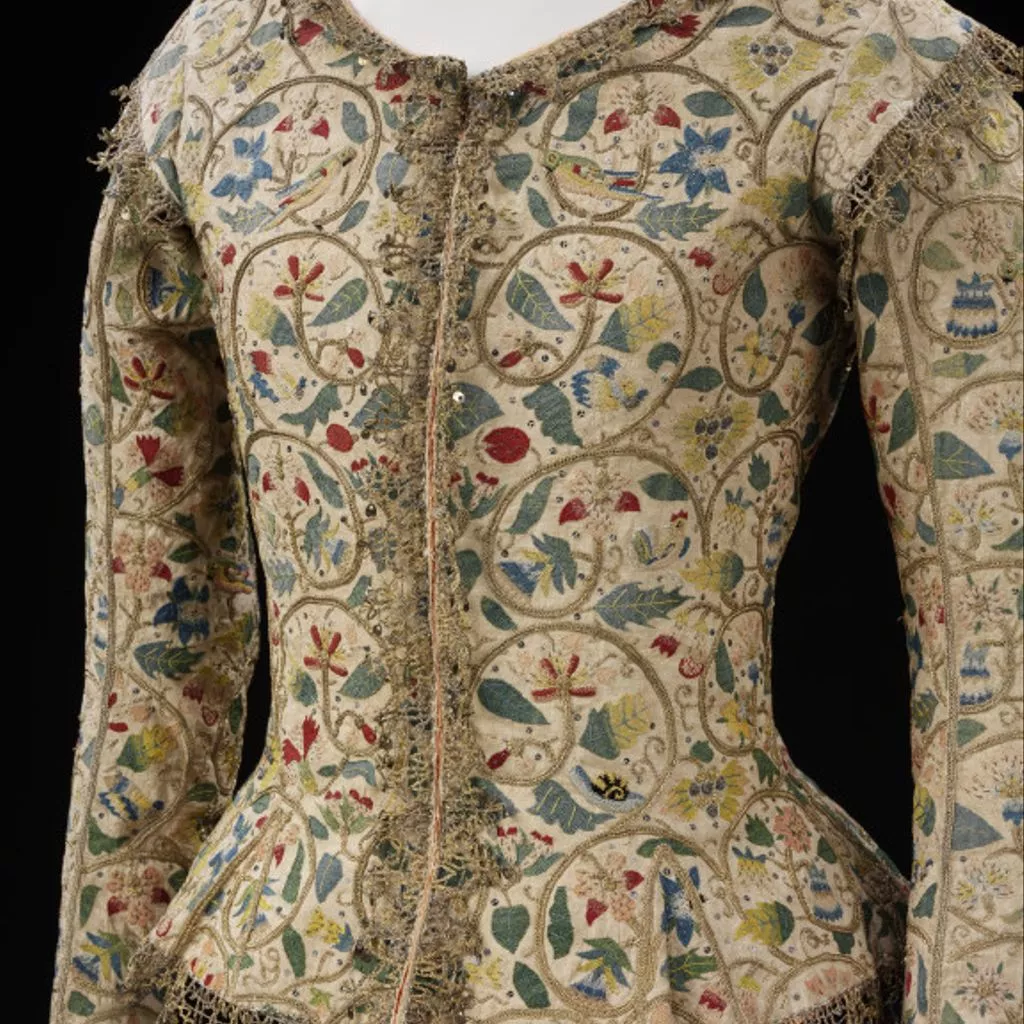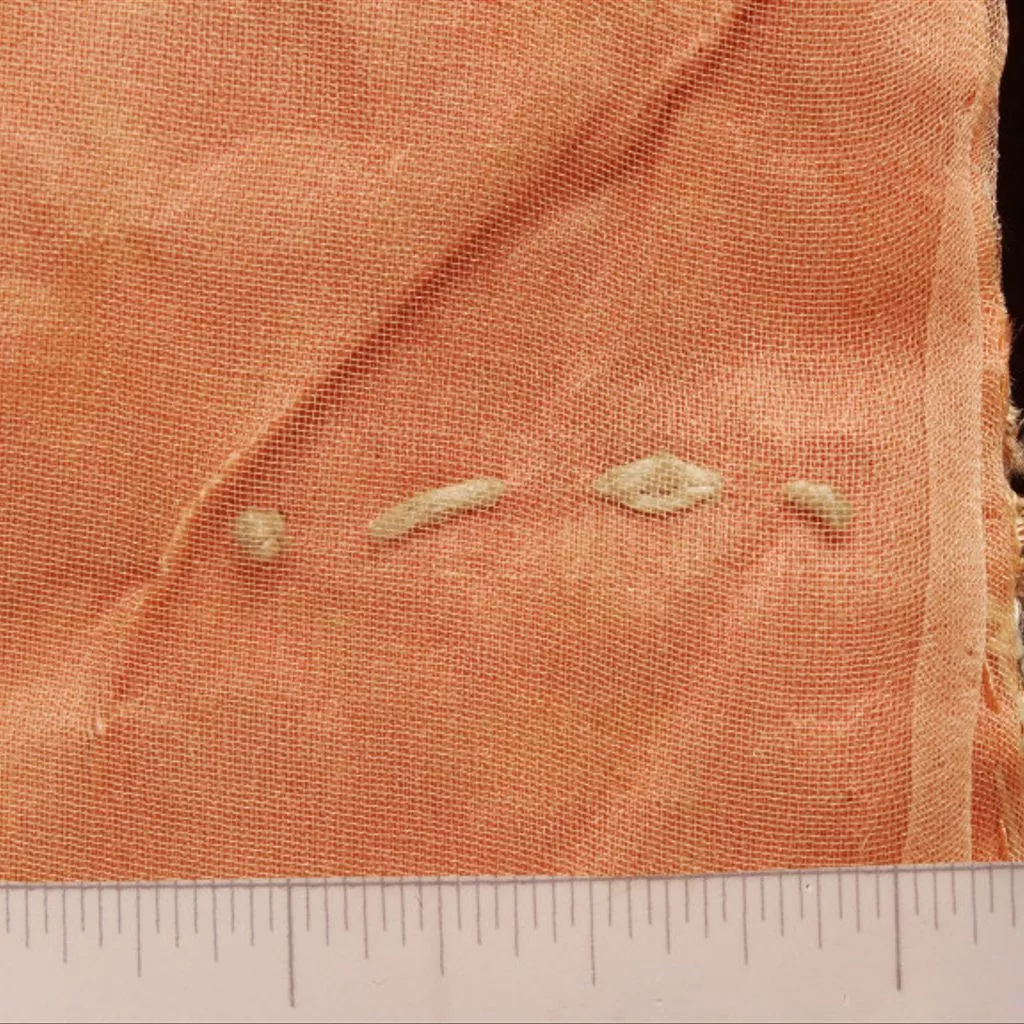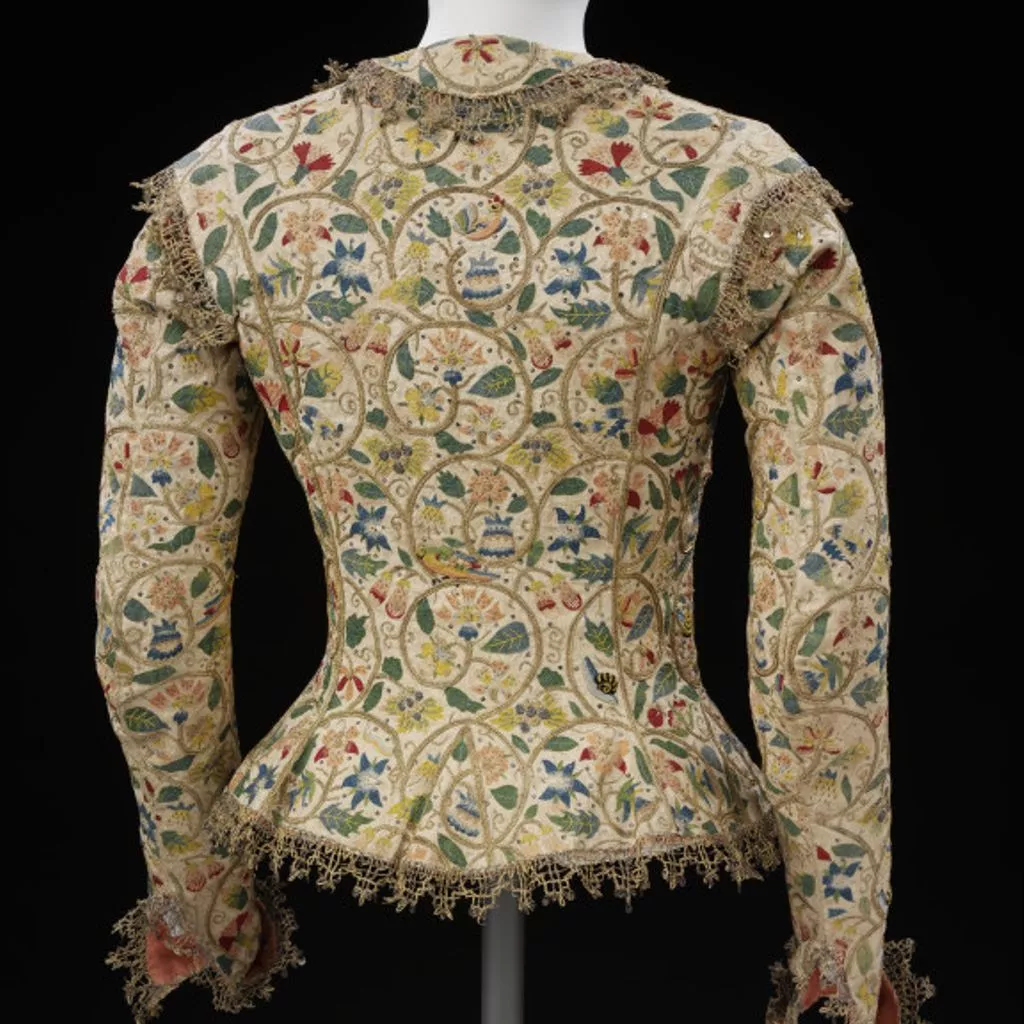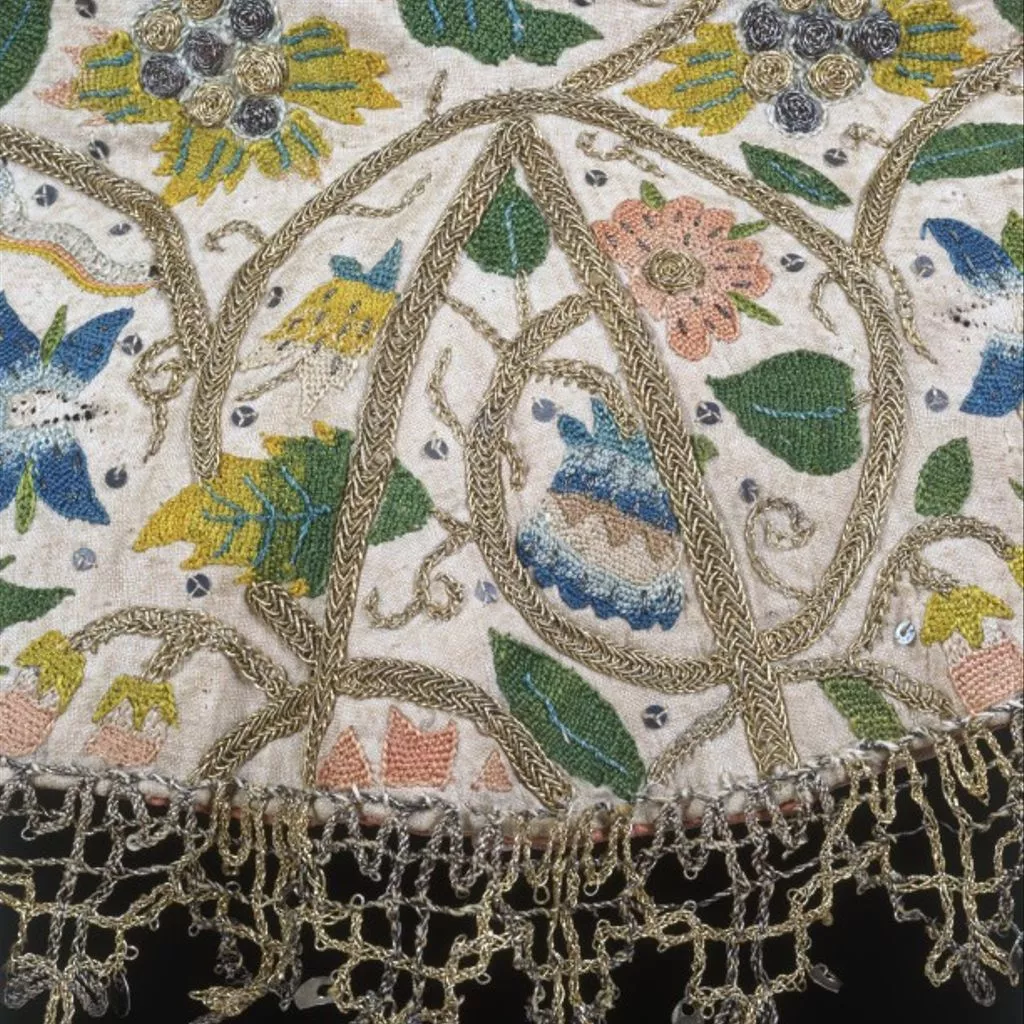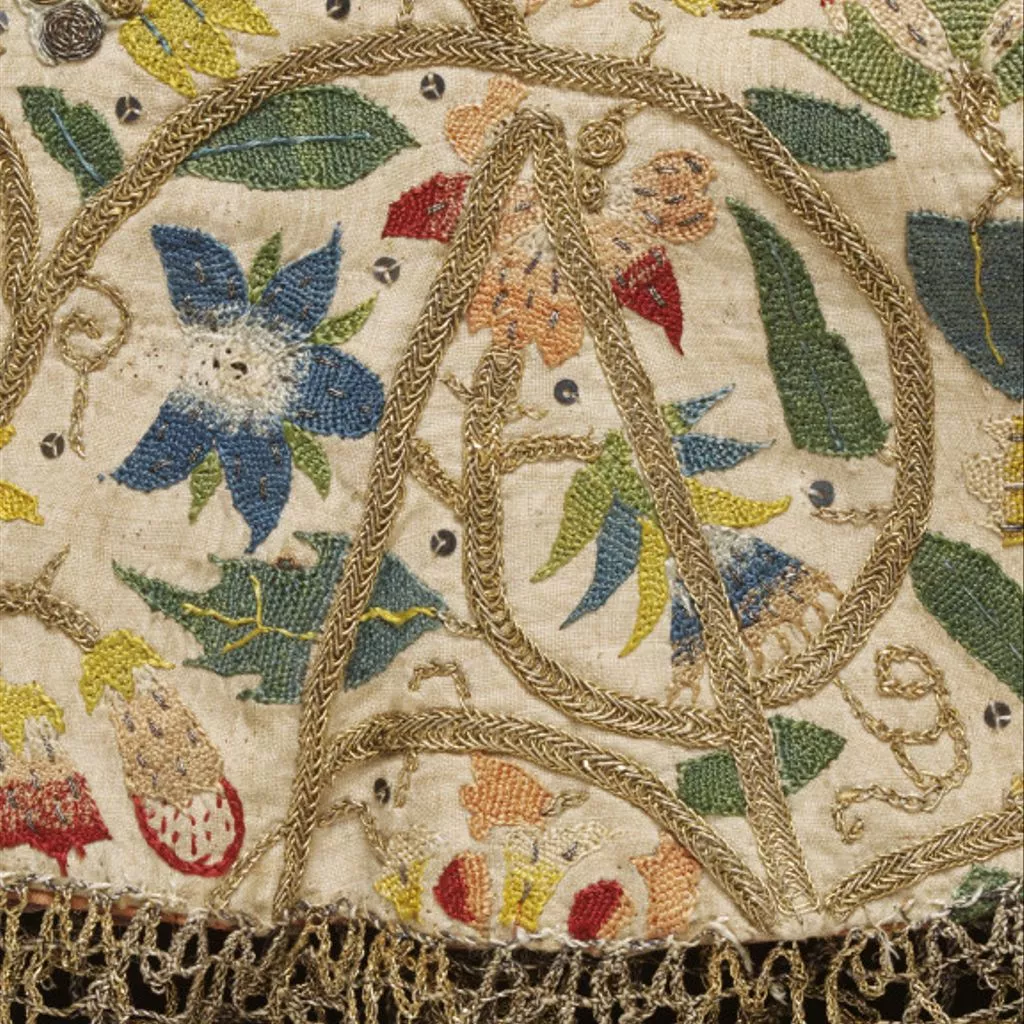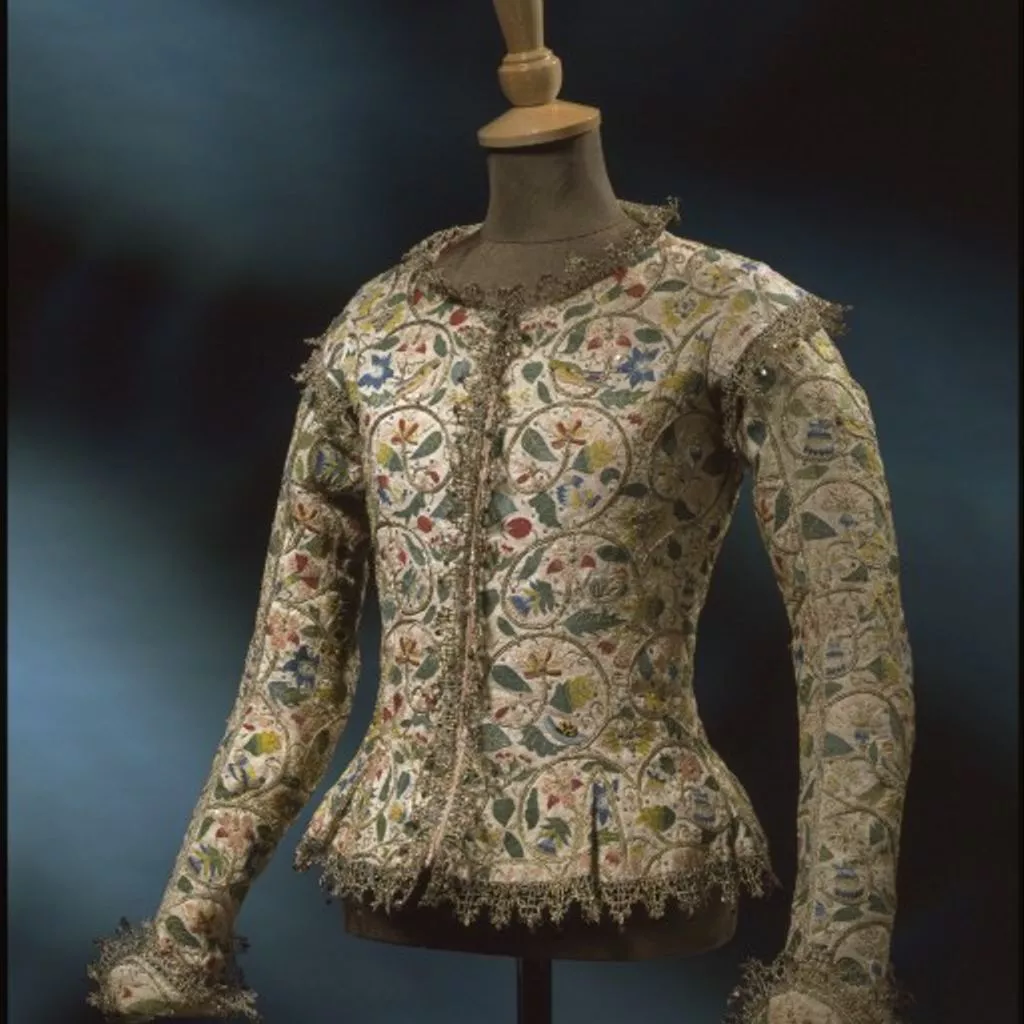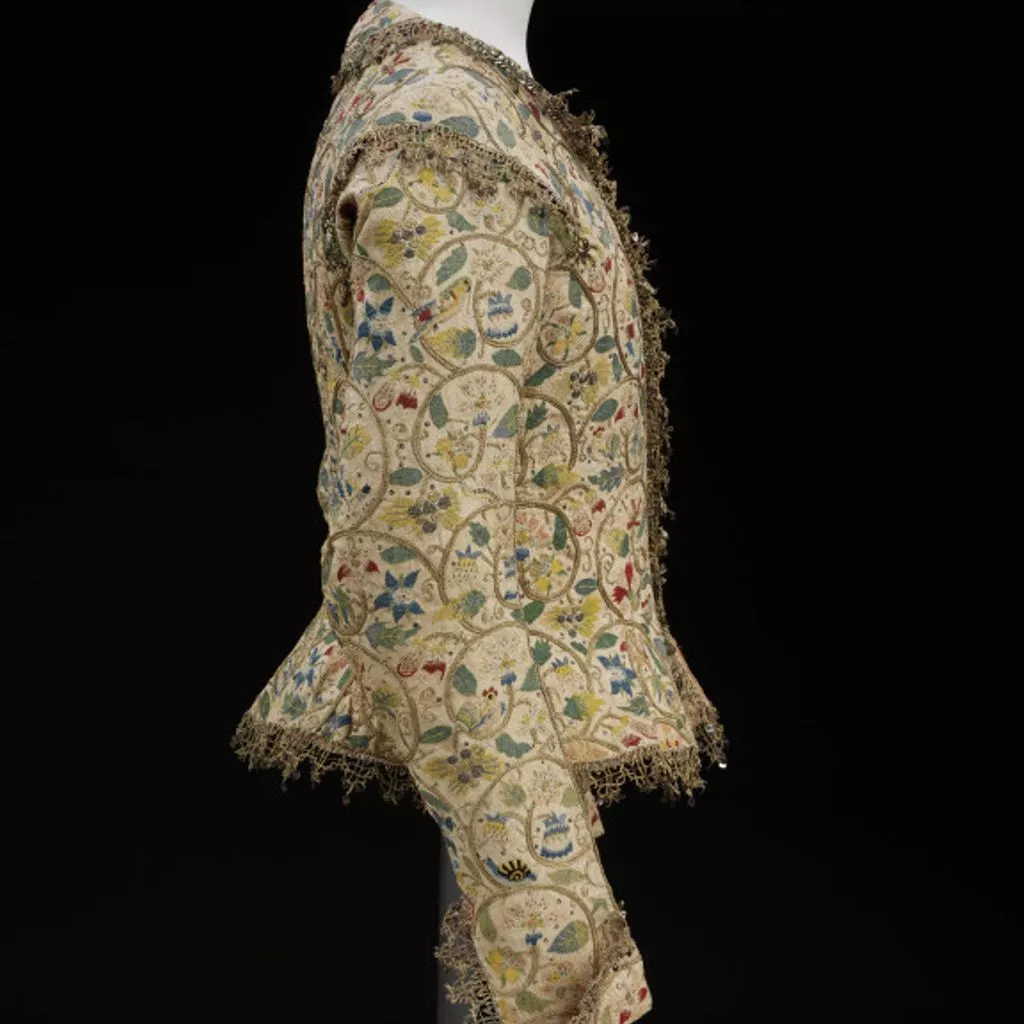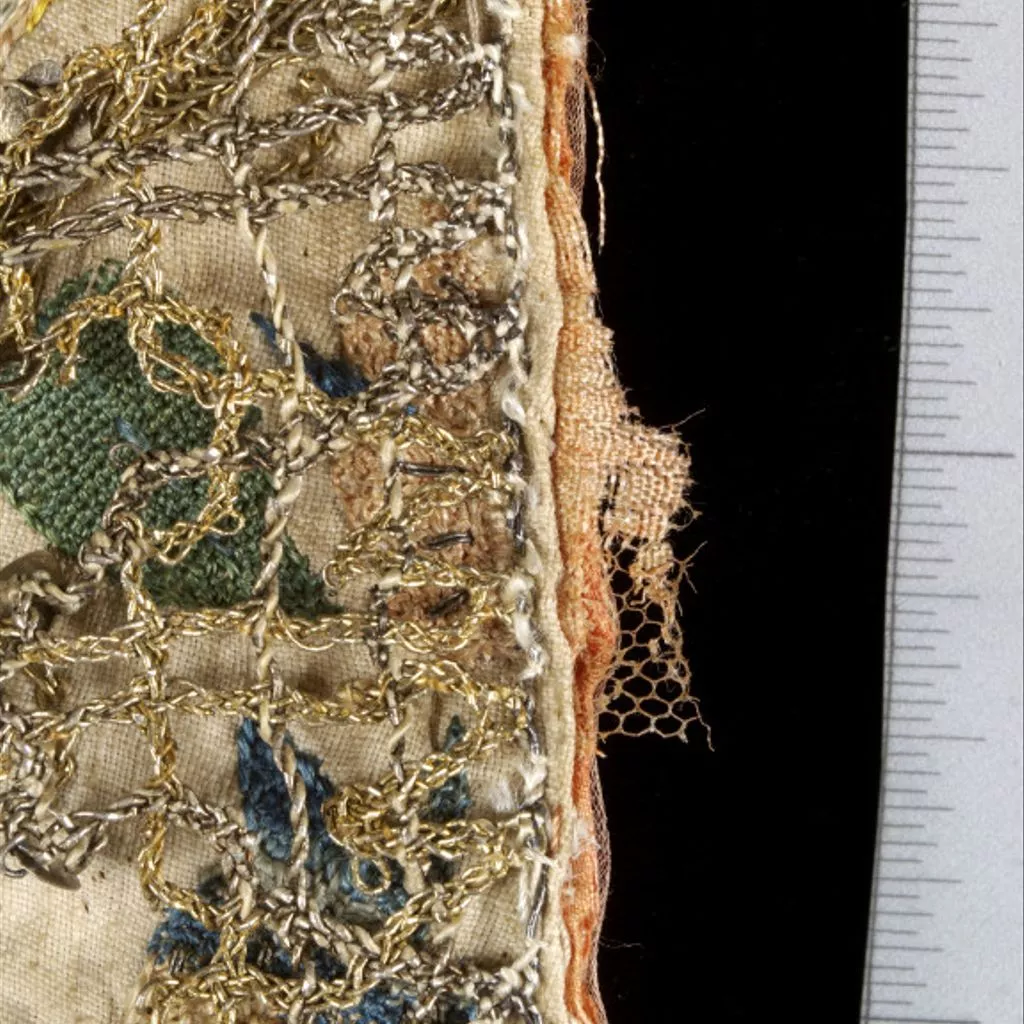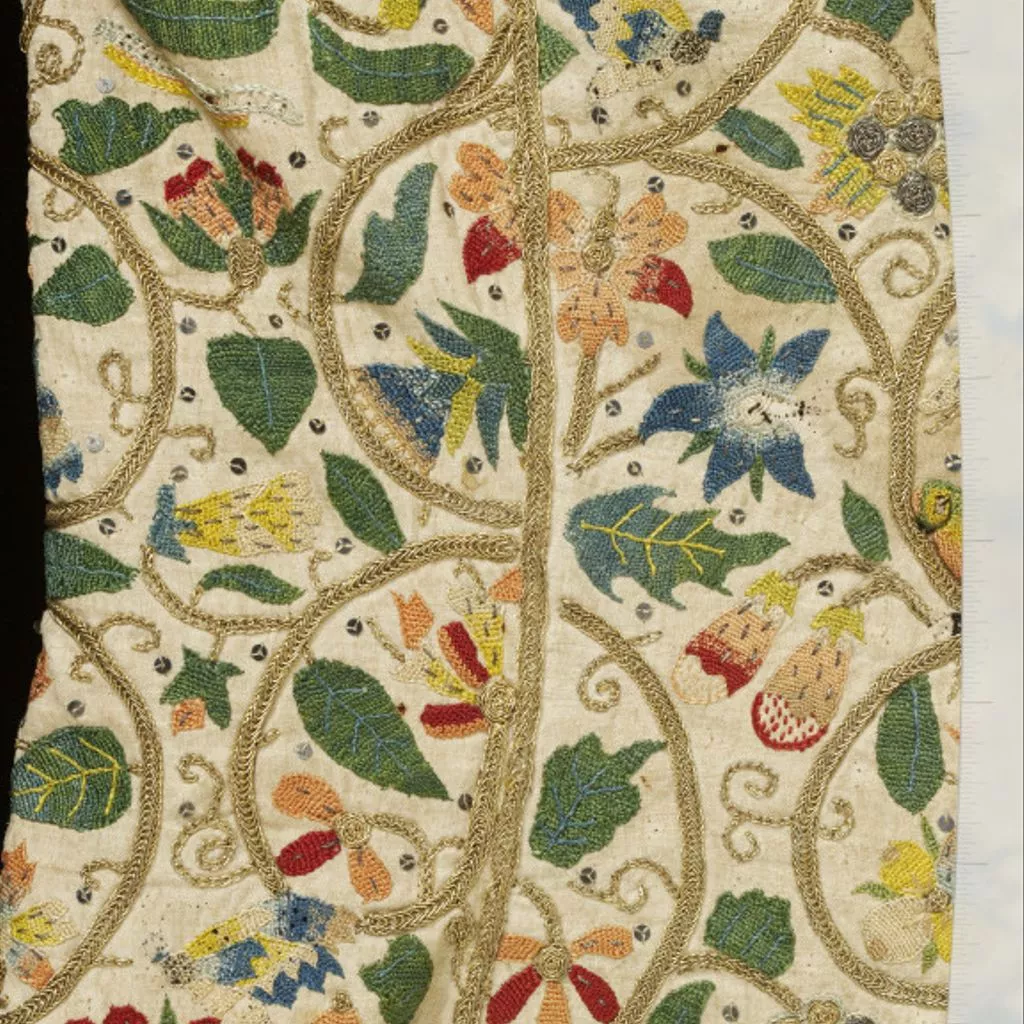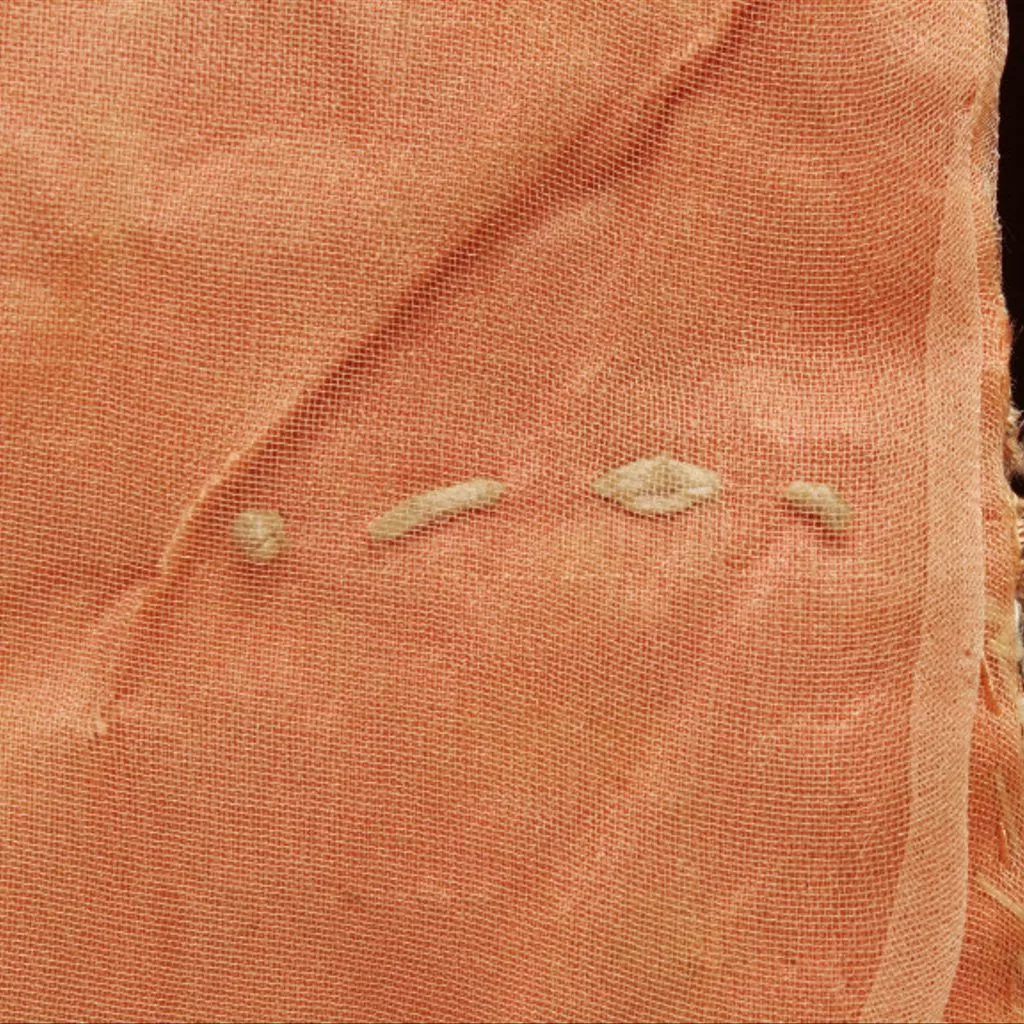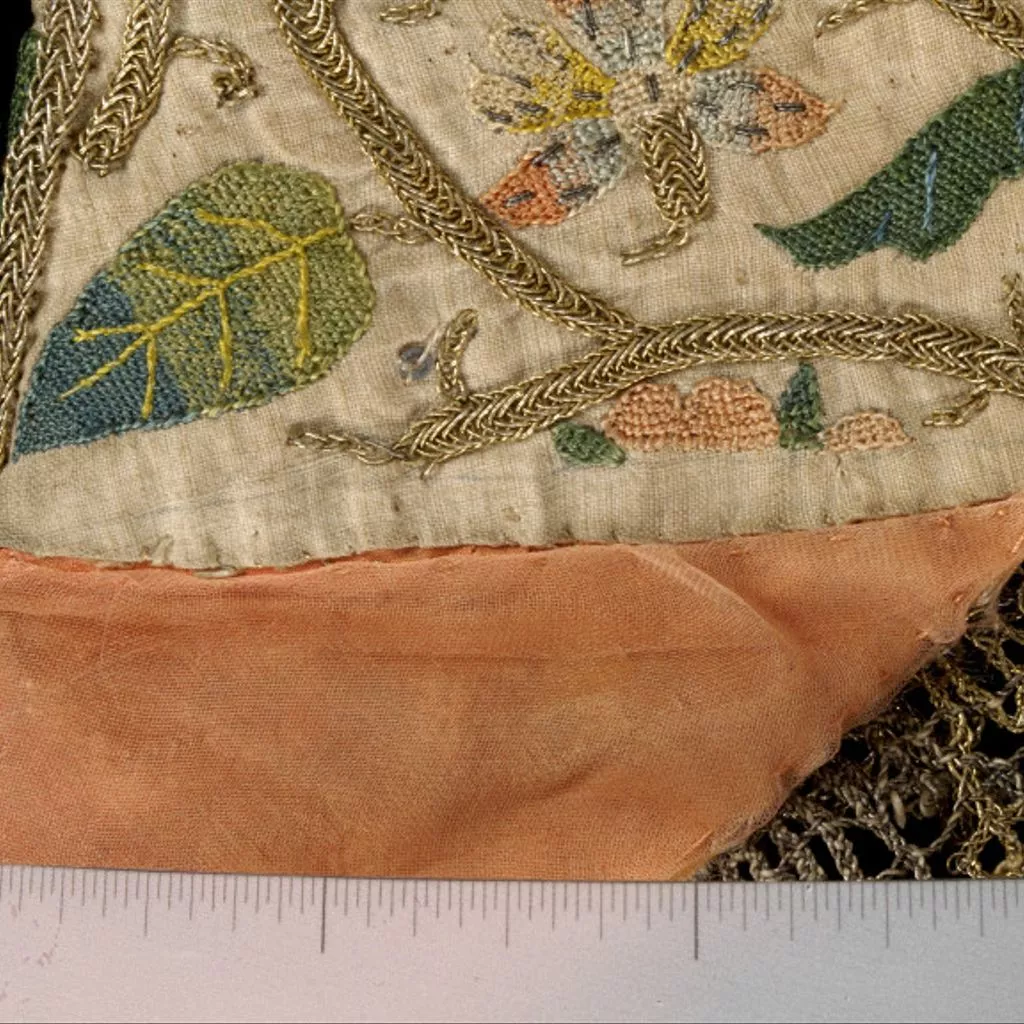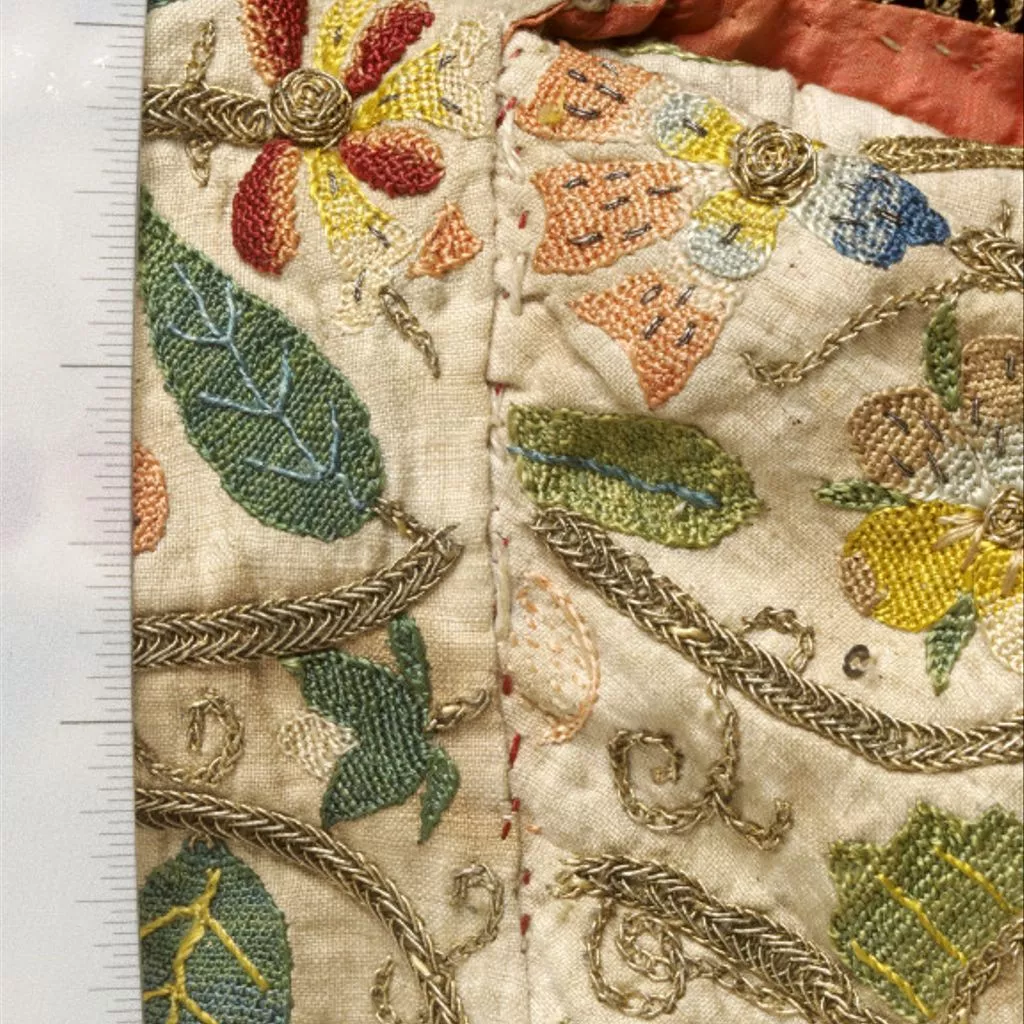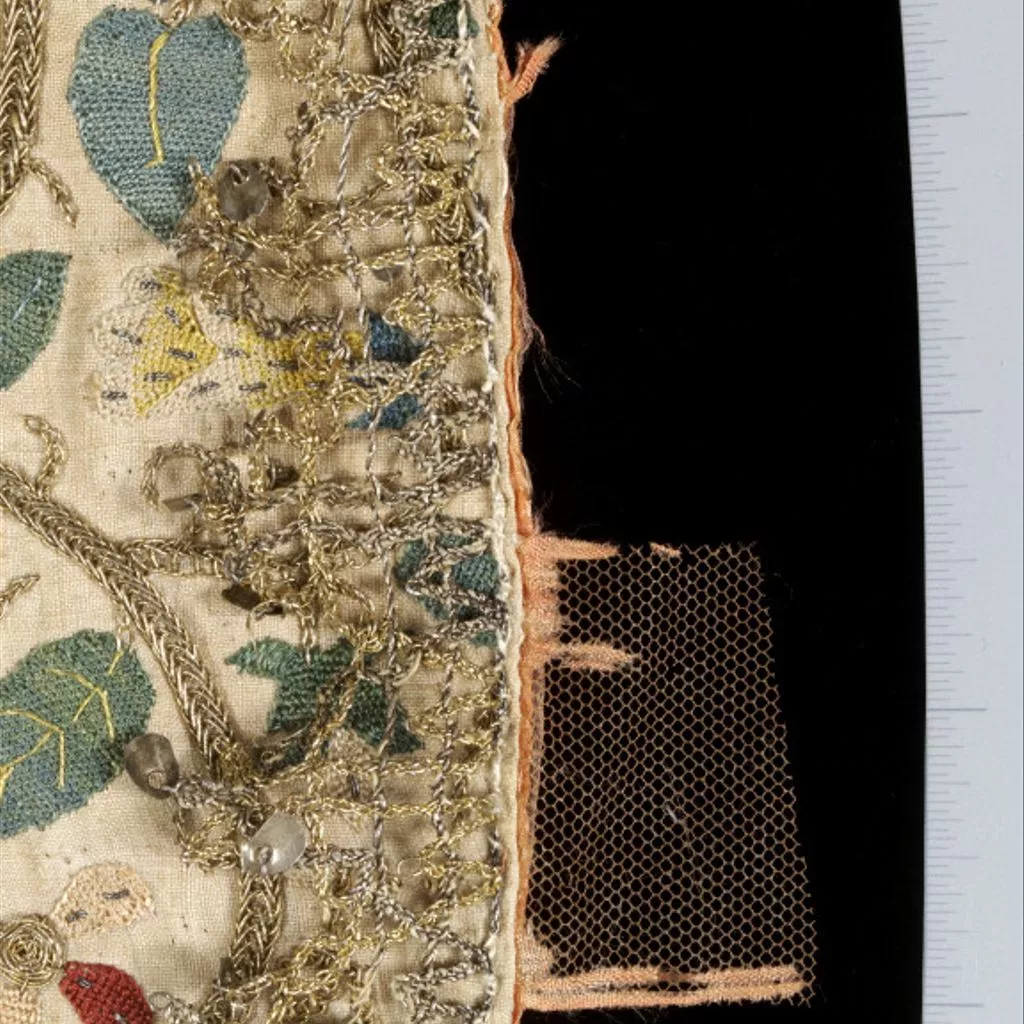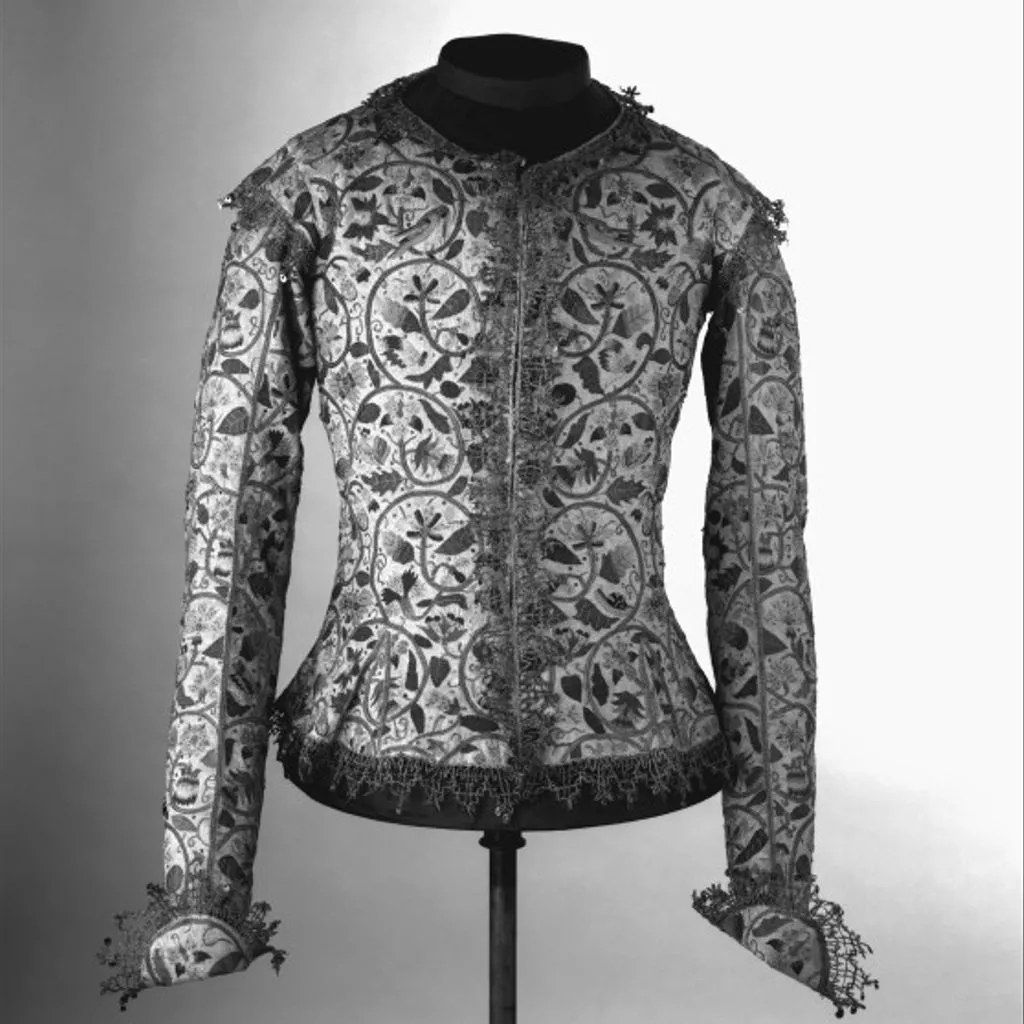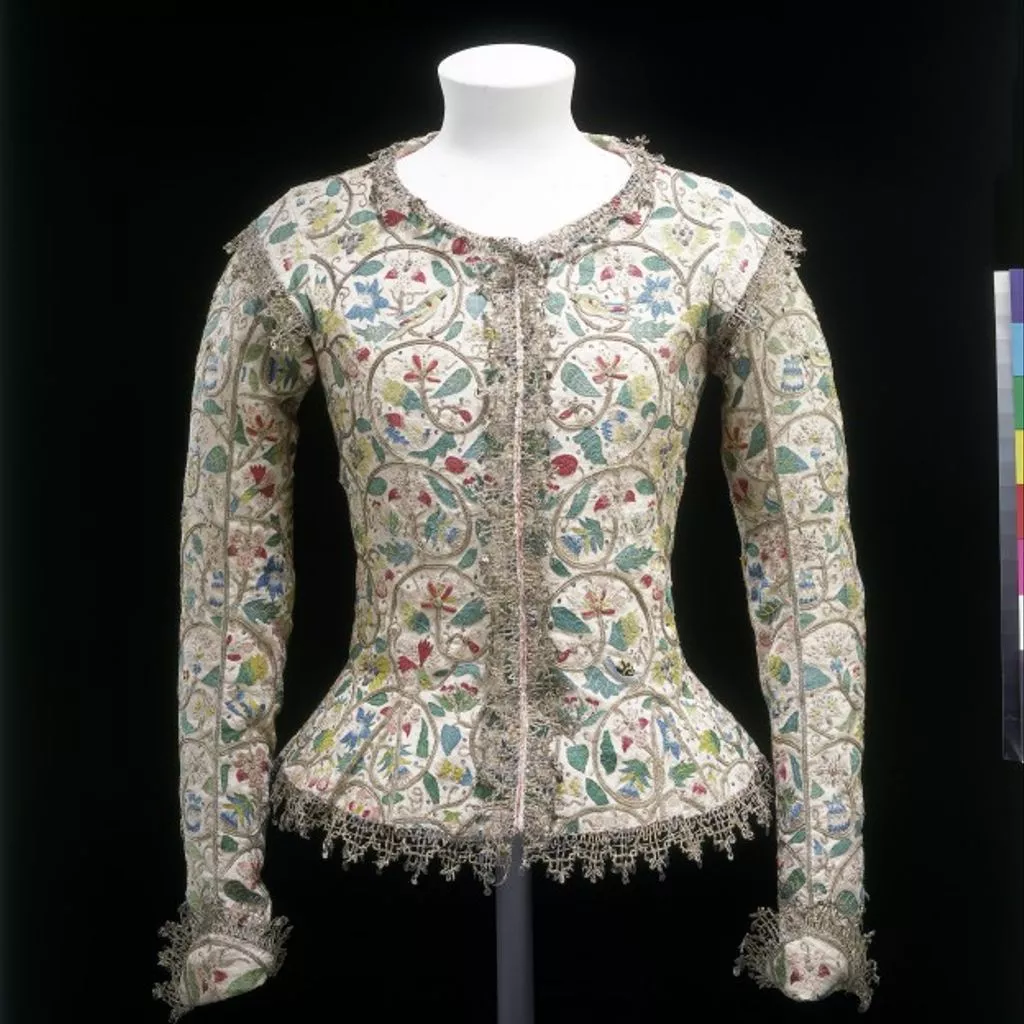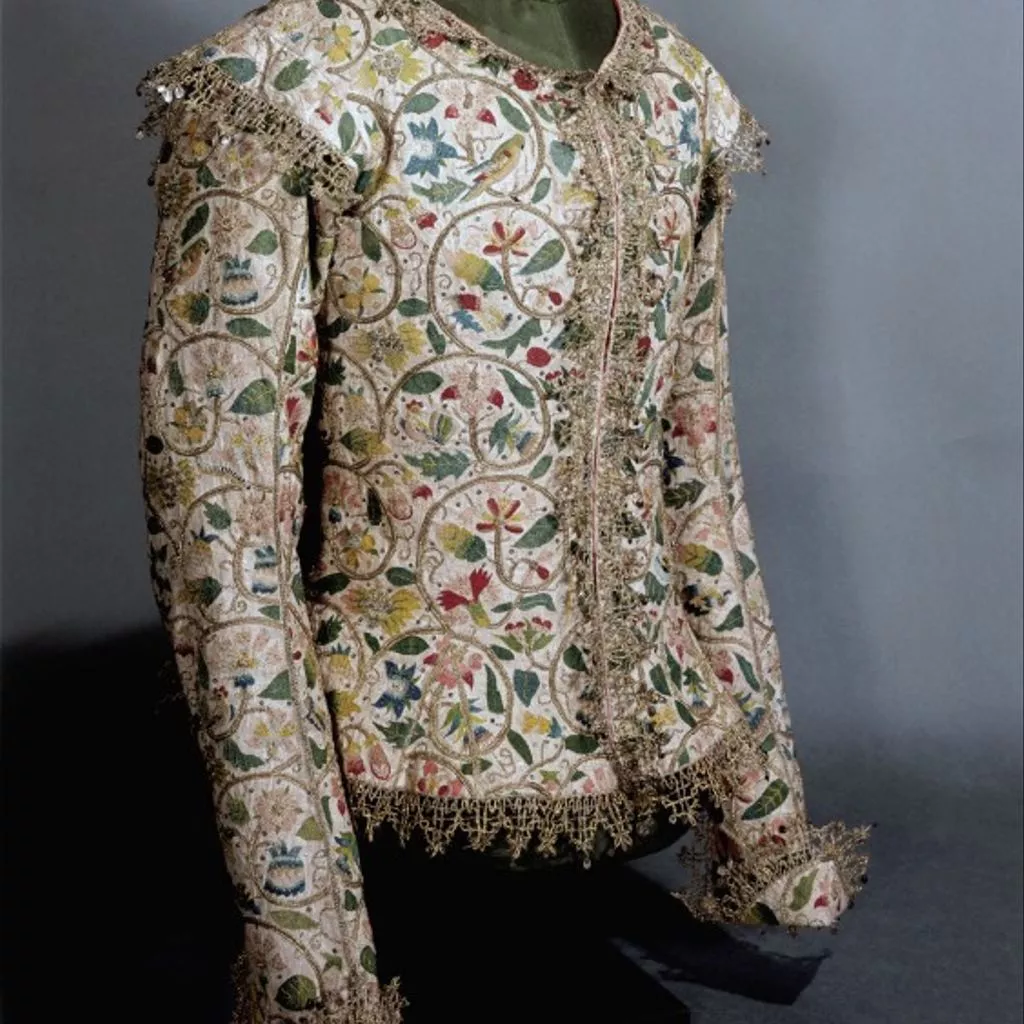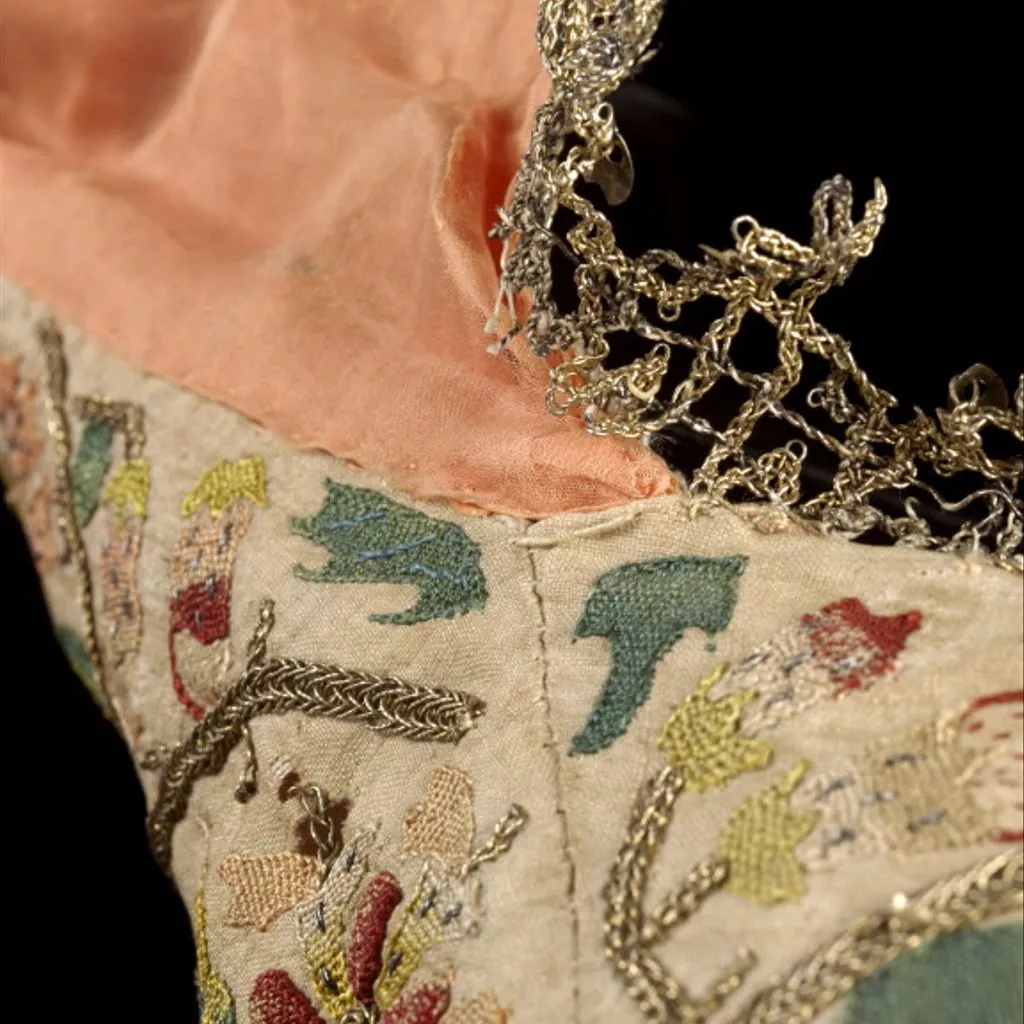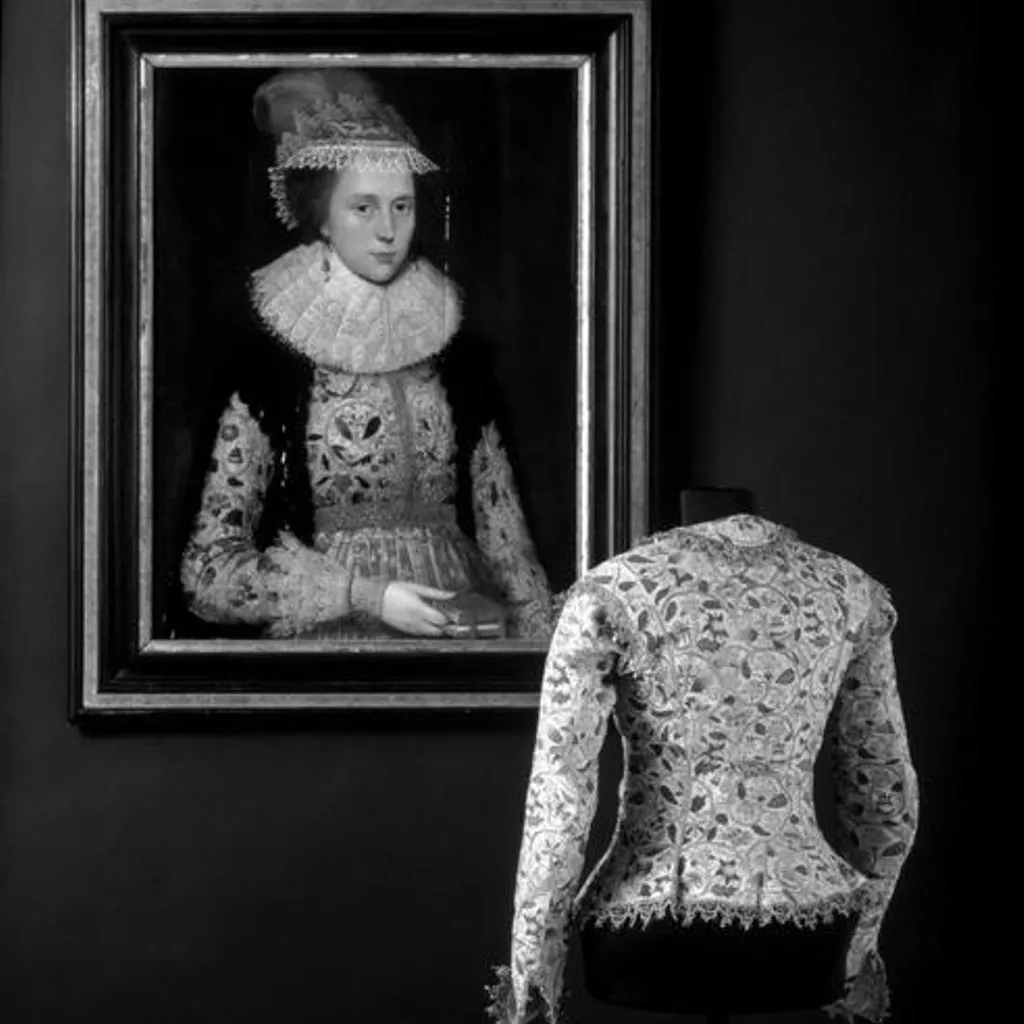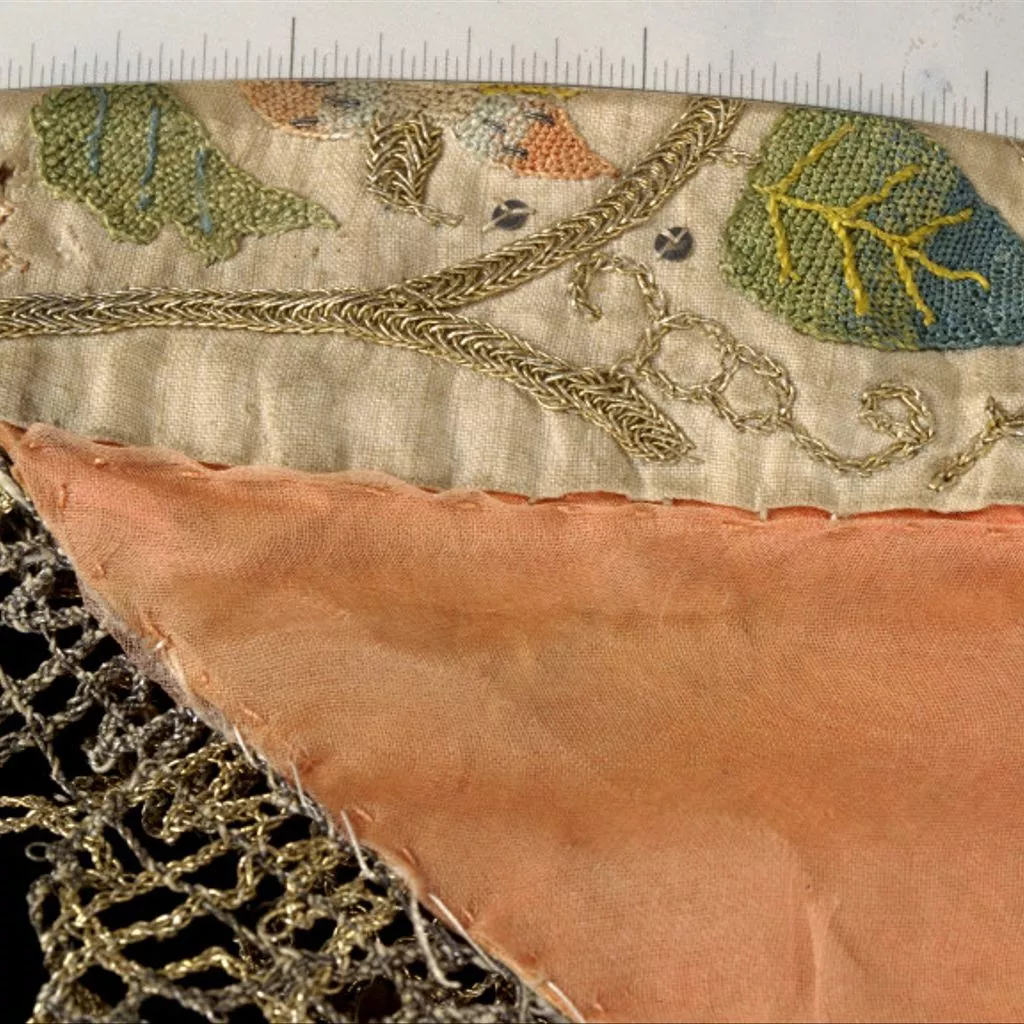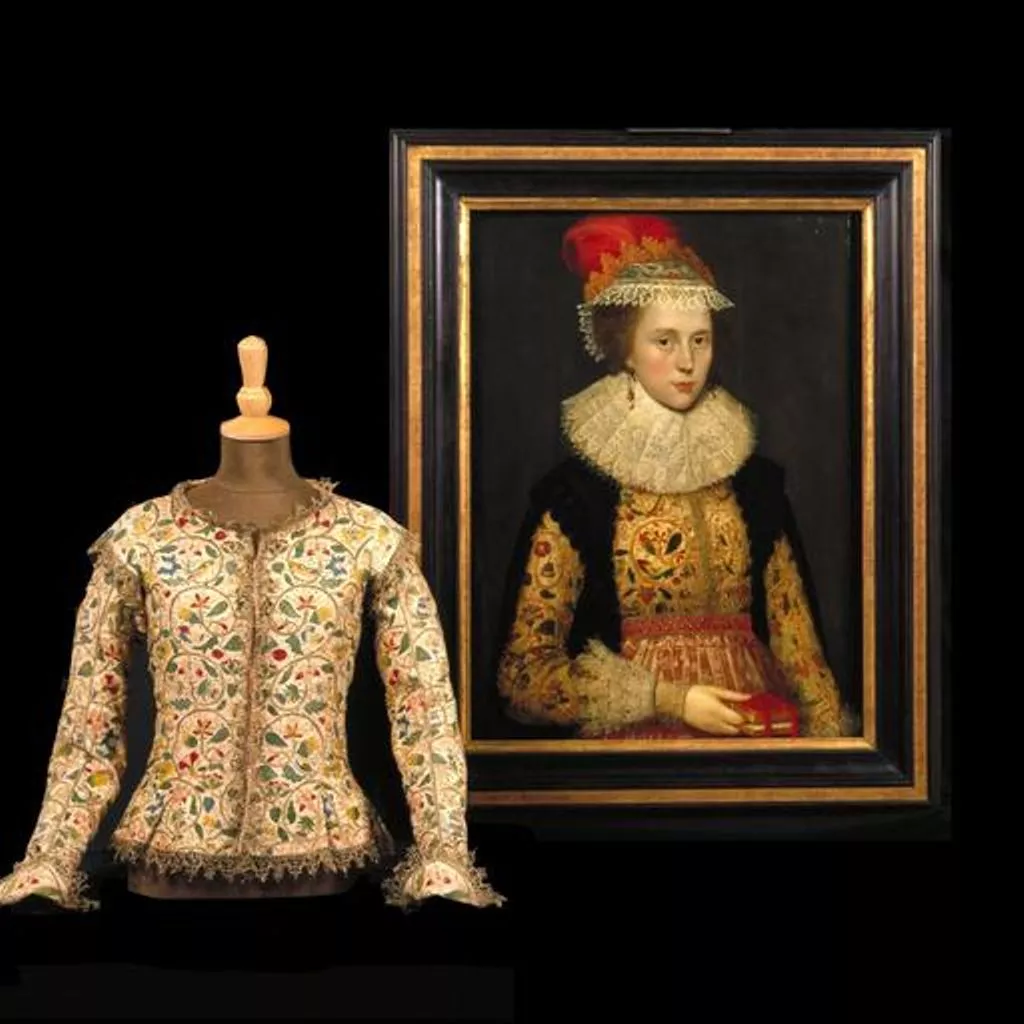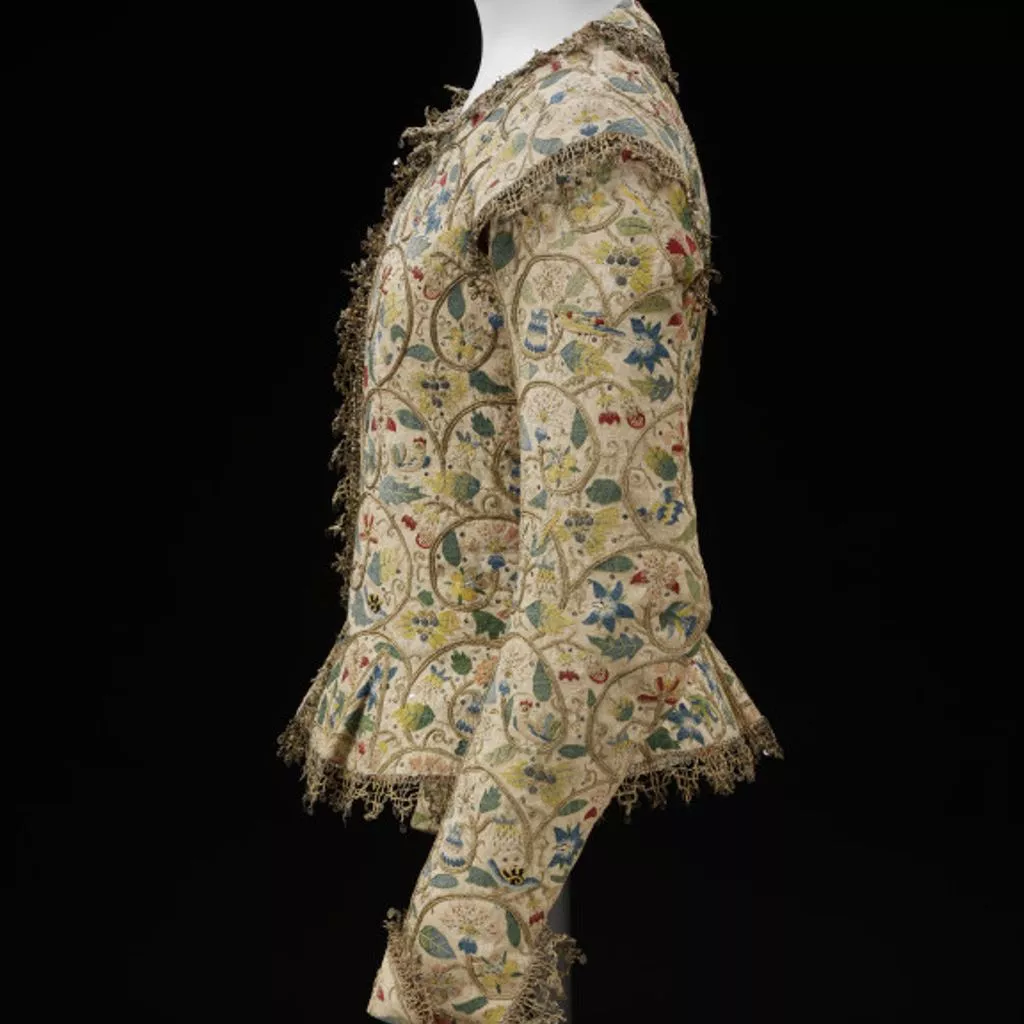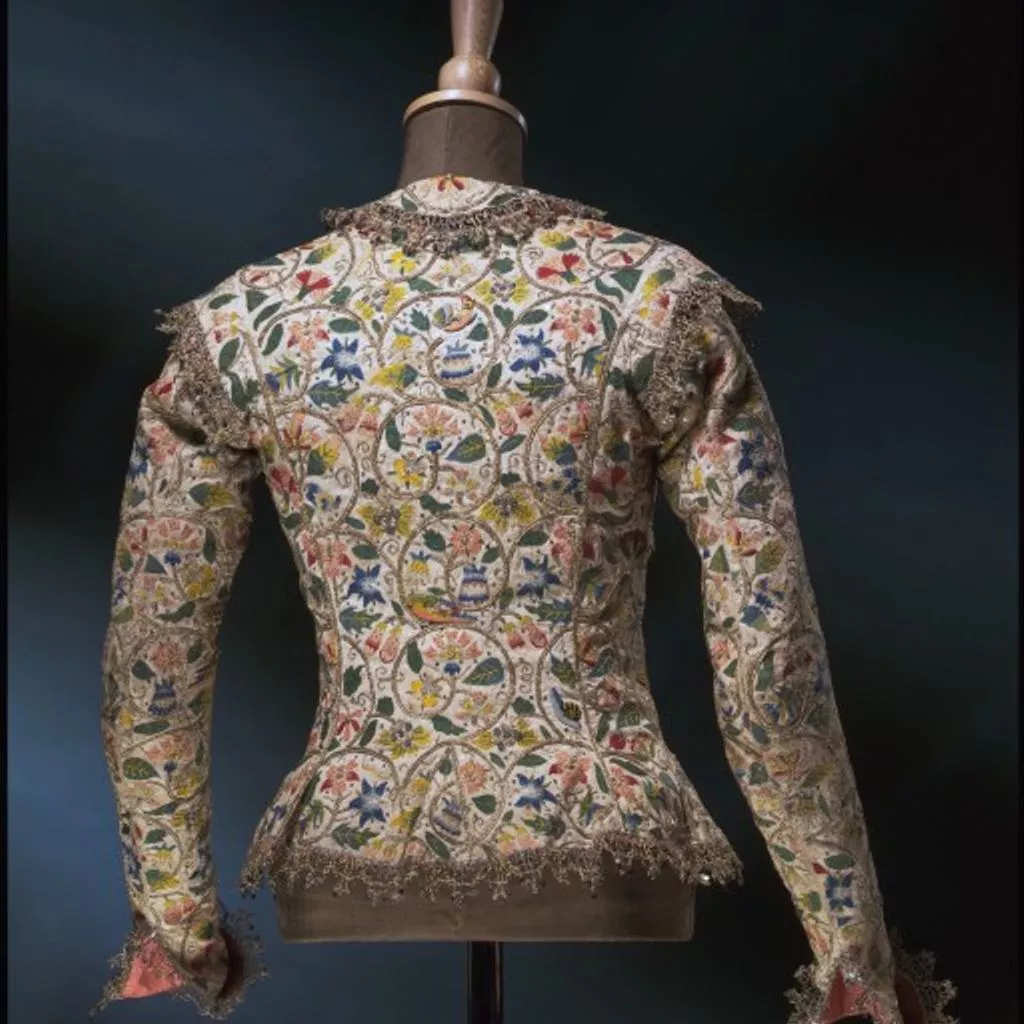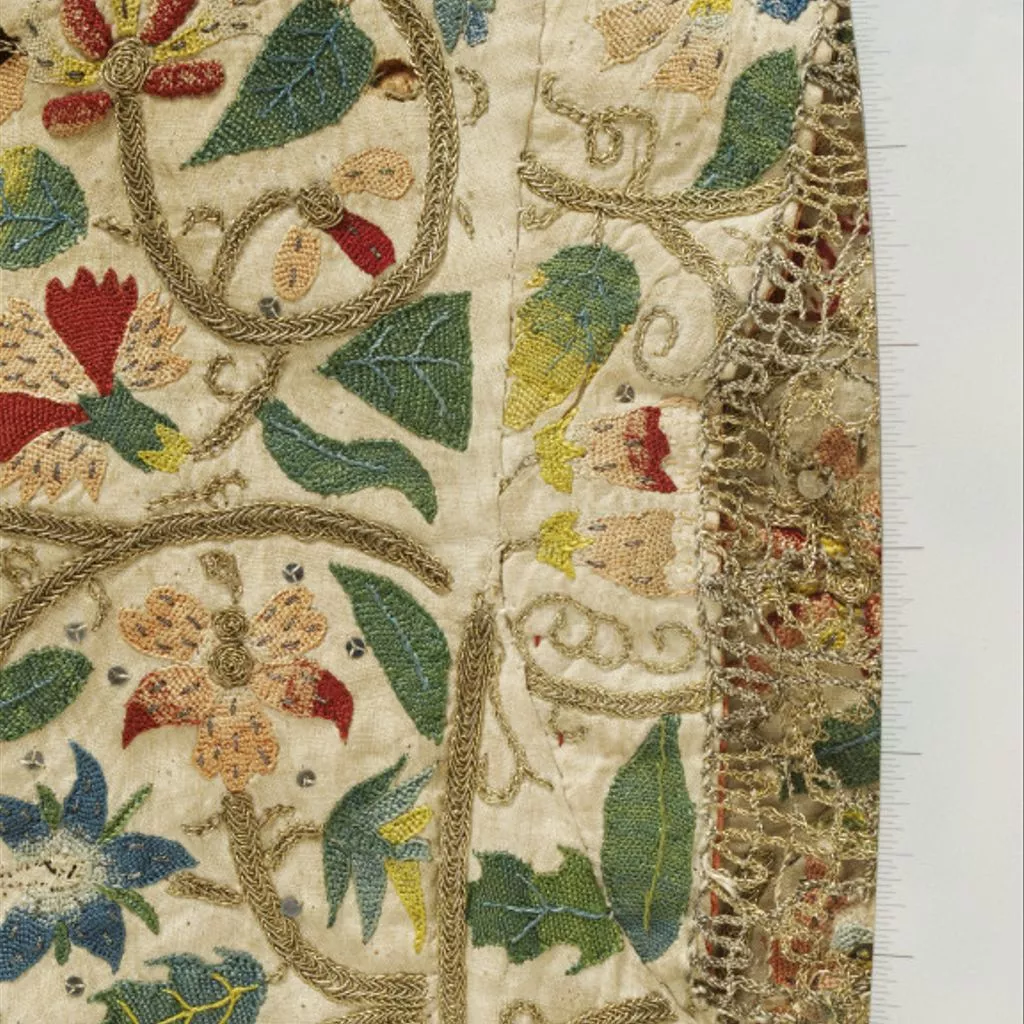1610, England
1610, England
- Identifier
- T.228-1994
- Acquisition
- Acquired with the assistance of the National Heritage Memorial Fund, The Art Fund and contributors to the Margaret Laton Fund
- Collection
- Material
- Technique
- Depiction
- Floral motif 95%

- Floral motif 78%

- Floral motif 64%

- Floral motif 96%

- Floral motif 63%

- Floral motif 57%

- Floral motif 96%

- Floral motif 72%

- Floral motif 82%

- Floral motif 93%

- Floral motif 62%

- Floral motif 55%

- Floral motif 93%

- Floral motif 66%

- Floral motif 47%

- Floral motif 60%

- Floral motif 92%

- Floral motif 95%

- Floral motif 90%

- Floral motif 50%

- Floral motif 89%

- Floral motif 88%

- Floral motif 87%

- Floral motif 88%

- Floral motif 96%

- Floral motif 83%

- Floral motif 54%

- Floral motif 45%

- Floral motif 78%

- Floral motif 92%

- Floral motif 54%

- Floral motif 96%

- Floral motif 66%

- Floral motif 70%

- Floral motif 47%

- Floral motif 59%

- Floral motif 50%

- Floral motif 46%

- Floral motif 72%

- Floral motif 86%

- Floral motif 49%

- Floral motif 42%

- Floral motif 86%

- Floral motif 52%

- Floral motif 48%

- Floral motif 65%

- Floral motif 71%

- Vegetal motif 39%

- Vegetal motif 52%

- Vegetal motif 51%

- Vegetal motif 36%

- Vegetal motif 62%

- Vegetal motif 72%

- Vegetal motif 49%

- Vegetal motif 36%

- Vegetal motif 51%

- Vegetal motif 49%

- Vegetal motif 39%

- Vegetal motif 41%

- Vegetal motif 65%

- Vegetal motif 51%

- Vegetal motif 62%

- Vegetal motif 40%

- Vegetal motif 46%

- Geometrical motif 45%

- Geometrical motif 41%

- Geometrical motif 52%

- Geometrical motif 70%

- Geometrical motif 48%

- Geometrical motif 49%

- Geometrical motif 44%

- Geometrical motif 52%

- Geometrical motif 43%

- Geometrical motif 43%

- Geometrical motif 56%

- Geometrical motif 36%

- Geometrical motif 58%

- Geometrical motif 43%

- Geometrical motif 75%

- Geometrical motif 55%

- Geometrical motif 45%

- Geometrical motif 62%

- Geometrical motif 45%

- Geometrical motif 59%

- Geometrical motif 46%

- Geometrical motif 53%

- Geometrical motif 68%

- Floral motif 95%
- Dimension
- 79.5 cm (circumference)40 cm (depth)63 cm (height)51 cm (length)60 cm (width)67 cm (width)
- Production time
- Production place
- Type of object
Description
This fine early 17th-century woman's waistcoat is particularly significant because it is shown being worn in the Portrait of Margaret Layton (museum no. E.214-1994), attributed to Marcus Gheeraerts the Younger (1561-1636) and displayed alongside it. Waistcoats were long-sleeved upper garments, opening down the front and fitted at the waist using inserted gores. They were often made of linen and splendidly decorated as in this example.
Ownership & Use
Margaret Laton or Margaret Layton – What's in a name? When the V&A acquired the jacket and portrait of Margaret Layton in 1994, we used the version ‘Laton’ following the example set in 1933 by V&A curator Albert Kendrick. However, according to documents and monuments of the Layton family in Rawdon, Yorkshire, and the Dictionary of National Biography, the name was always spelled with a ‘y’. We are now making corrections in V&A labels, brochures, publications and on the V&A website. In the portrait, Margaret Layton wears the waistcoat with an Italian needlelace collar and cuffs, a black velvet gown, a red silk petticoat and a whitework apron. As with many women of this period, we know very little about her life, other than her recorded connections to her father and husband.
Materials & Making
The waistcoat has long, tight sleeves, narrow shoulder wings, semi-circular cuffs and a small curved collar at the back neck, dating it to about 1610. Made of linen, it is hand sewn and lined with coral silk taffeta. Originally the jacket was fastened with pink silk ribbons. In the 1620s, an edging of spangled silver-gilt bobbin lace was added. Fragments remain of the original silk ribbons used for fastening. The waistcoat is embroidered in detached buttonhole, stem, plaited braid, chain, couching and dot stitches, with knots and speckling, with coloured silk threads, silver-gilt threads and spangles.
Time
Although the waistcoat was made about 1610, the portrait was painted more than 10 years later. By this time, waistlines had risen. Margaret Layton adapted to the new style by raising her petticoat and covering the lower half of the waistcoat. This waistcoat is a fine example of the type of garment worn for formal day wear for Englishwomen of the late 16th and early 17th century. In the portrait, the waistcoat is worn with an Italian needlelace collar and cuffs, a black velvet gown, a red silk petticoat and a whitework apron. The embroidery pattern is typically English of the late 16th and early 17th century featuring a variety of plants, flowers, birds and insects based on images in pattern books, herbals and emblem books. waistcoat, linen, embroidered with coloured silks, silver and silver-gilt thread, made 1610-1615, altered 1620, England, Margaret Layton (formerly Laton) British Galleries: This jacket is an example of formal daywear worn by wealthy Englishwomen in the early 17th century. The embroidery is based on designs from pattern books, herbals and emblem books. It is of a very high quality and probably professional work. Although this one was luxurious, a jacket of this type would not have been the most formal or expensive garment in Margaret Laton's wardrobe. [27/03/2003] A woman's waistcoat with long, close-fitting sleeves, narrow shoulder wings, semi-circular cuffs and a small curved collar at the back neck. The torso is cut in three pieces: two front side pieces and one back panel with five gores inserted at the lower edge to give ease over the hips. The sleeves are cut in two pieces with a slit at the wrist. The whole garment is lined with coral silk taffeta. The whole garment is embroidered in an all over pattern of scrolling vines in silver-gilt plaited braid stitch from which spring a variety of flowers, fruits and insects worked in coloured silks and silver-gilt thread. In the 1620s, an edging of spangled silver-gilt bobbin lace was added. Fragments remain of the original silk ribbons used to fasten the waistcoat. Embroidered using detached buttonhole, stem, plaited braid, chain, couching and dot stitches, with knots and speckling, with coloured silk threads, silver-gilt threads and spangles..
